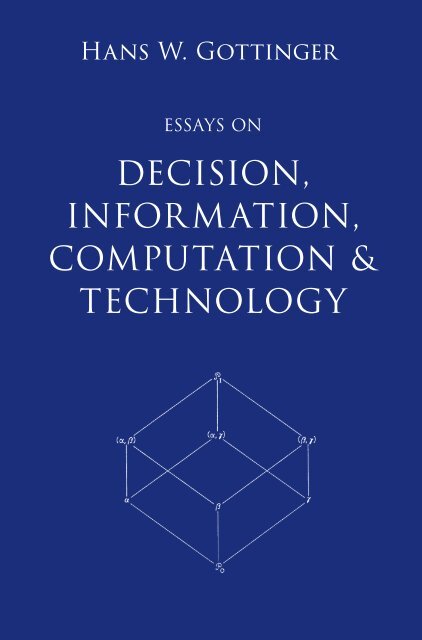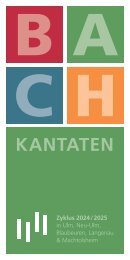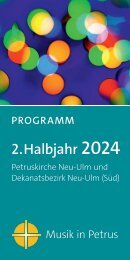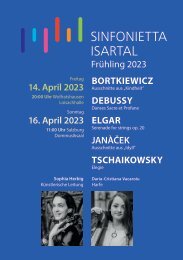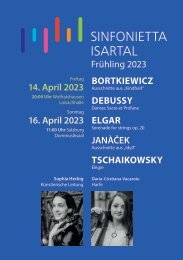Hans Gottinger, Essays on Decision, Information, Computation and Technology
Create successful ePaper yourself
Turn your PDF publications into a flip-book with our unique Google optimized e-Paper software.
<str<strong>on</strong>g>Hans</str<strong>on</strong>g> W. <str<strong>on</strong>g>Gottinger</str<strong>on</strong>g><br />
ESSAYS ON<br />
DECISION,<br />
INFOR MATION,<br />
COMPUTATION &<br />
TECHNOLOGY
<str<strong>on</strong>g>Hans</str<strong>on</strong>g> W. <str<strong>on</strong>g>Gottinger</str<strong>on</strong>g><br />
ESSAYS ON<br />
DECISION,<br />
INFOR MATION,<br />
COMPUTATION &<br />
TECHNOLOGY<br />
<str<strong>on</strong>g>Hans</str<strong>on</strong>g> W. <str<strong>on</strong>g>Gottinger</str<strong>on</strong>g><br />
STRATEC Munich, Germany<br />
www.stratec-c<strong>on</strong>.net<br />
stratec_c@yahoo.com<br />
gottingerhans@gmail.com
Aggregate Keywords:<br />
Utility, Measurement/Scaling, Preference Orderings, Decisi<strong>on</strong>s, Decisi<strong>on</strong>-Making under Uncertainty,<br />
Strategy, Game Theory, Statistical Games/Decisi<strong>on</strong>s, Mathematical Ec<strong>on</strong>omics, Informati<strong>on</strong> Ec<strong>on</strong>omics,<br />
Organizati<strong>on</strong>s, Behavioral Ec<strong>on</strong>omics, Bounded/Limited Rati<strong>on</strong>ality, Optimal Search, Complexity<br />
Measures, Intelligent Decisi<strong>on</strong> Systems, Statistical Expert Systems, Policy Decisi<strong>on</strong>s, Regulatory<br />
Decisi<strong>on</strong>s, Social/Envir<strong>on</strong>mental Decisi<strong>on</strong>s.
CONTENTS<br />
HANS W. GOTTINGER<br />
CONTENTS<br />
ESSAYS ON DECISIONS , INFORMATION,<br />
COMPUTATION AND SYSTEMS<br />
C<strong>on</strong>tents ................................................................................................ I<br />
Foreword. .............................................................................................. III<br />
Preface <strong>and</strong> Introducti<strong>on</strong> ............................................................................... V<br />
1. Preferences, Informati<strong>on</strong> <strong>and</strong> Decisi<strong>on</strong> ................................................. 1<br />
1.1 Über die Existenz einer stetigen, reellen Nutzenfunkti<strong>on</strong><br />
(On the Existence of a c<strong>on</strong>tinuous, real-valued utility functi<strong>on</strong>) ................................... 3<br />
1.2 Methodologische Entwicklungen in der Meßtheorie<br />
(Methodological Developments in Measurement Theory) ....................................... 11<br />
1.3 Existence of a Utility <strong>on</strong> a Topological Semigroup ............................................... 45<br />
1.4 C<strong>on</strong>diti<strong>on</strong>al Utility ............................................................................. 59<br />
1.5 Foundati<strong>on</strong>s of Lexicographic Utility . ........................................................... 69<br />
1.6 Decisi<strong>on</strong> problems under uncertainty based <strong>on</strong> entropy functi<strong>on</strong>als ............................. 79<br />
1.7 Choice <strong>and</strong> Complexity . ....................................................................... 109<br />
1.8 Computati<strong>on</strong>al Costs <strong>and</strong> Bounded Rati<strong>on</strong>ality (Philosophy of Ec<strong>on</strong>omics, 223-238) ............. 127<br />
1.9 Krohn-Rhodes Complexity <strong>on</strong> Decisi<strong>on</strong> Rules . .................................................. 143<br />
1.10 An Informati<strong>on</strong> Theoretic Approach to Large Organizati<strong>on</strong>s .................................... 157<br />
1.11 Some Measures of Informati<strong>on</strong> arising in Statistical Games ..................................... 169<br />
1.12 Subjective Qualitative Informati<strong>on</strong> Structures based <strong>on</strong> Orderings .............................. 175<br />
1.13 Qualitative Informati<strong>on</strong> <strong>and</strong> Comparative Informativeness ..................................... 205<br />
1.14 On a Problem of Optimal Search .............................................................. 219<br />
2. Intelligent Decisi<strong>on</strong> Systems ........................................................ 229<br />
2.1 Intelligent Decisi<strong>on</strong> Support Systems (with Peter Weimann) ..................................... 231<br />
2.2 Statistical Expert Systems ...................................................................... 247<br />
2.3 Artificial Intelligence <strong>and</strong> Ec<strong>on</strong>omic Modeling .................................................. 261<br />
3. Applicati<strong>on</strong>s ....................................................................... 269<br />
3.1 Assessment of Social Value in the Allocati<strong>on</strong> of CT Scanners in the Munich Metropolitan Area ... 271<br />
3.2 Adopti<strong>on</strong> Decisi<strong>on</strong>s <strong>and</strong> Diffusi<strong>on</strong> ............................................................. 299<br />
3.3 Choosing Regulatory Opti<strong>on</strong>s when Envir<strong>on</strong>mental Costs are Uncertain ........................ 317<br />
3.4 Dynamic Portfolio Strategies with Transacti<strong>on</strong> Costs ........................................... 331<br />
I
HANS W. GOTTINGER<br />
CONTENTS<br />
II
FOREWORD<br />
HANS W. GOTTINGER<br />
FOREWORD<br />
Selected writings of a very prolific author over a l<strong>on</strong>g-time period typically open a window both <strong>on</strong> the<br />
evoluti<strong>on</strong> of his thinking <strong>and</strong> <strong>on</strong> the changing focusses <strong>and</strong> fads of the scientific community. <str<strong>on</strong>g>Gottinger</str<strong>on</strong>g>s’s<br />
<str<strong>on</strong>g>Essays</str<strong>on</strong>g> <strong>on</strong> Decisi<strong>on</strong>, Informati<strong>on</strong>, Computati<strong>on</strong> & <strong>Technology</strong>, which cover roughly the period 1970-2000,<br />
are no excepti<strong>on</strong>.<br />
The essays, some of which are in German, are hard to subsume. They span across ec<strong>on</strong>omics, mathematics,<br />
operati<strong>on</strong>s research, expert systems, <strong>and</strong> then some. They include provocative advances, more st<strong>and</strong>ard<br />
efforts, <strong>and</strong> unc<strong>on</strong>troversial applicati<strong>on</strong>s. At their best, they delineate new venues of research that could<br />
significantly impact the way we are doing ec<strong>on</strong>omics. It has been widely argued, rightfully so in my<br />
opini<strong>on</strong>, that the imperialistic spread of neo-classical thinking has stuck much of the ec<strong>on</strong>omic professi<strong>on</strong><br />
in an increasingly noxious Newt<strong>on</strong>ian visi<strong>on</strong> of the ec<strong>on</strong>omy together with a very narrow c<strong>on</strong>cepti<strong>on</strong> of<br />
rati<strong>on</strong>al decisi<strong>on</strong>-making. As usual with theoretical approaches that struggle to cope with the reality, most<br />
improvements efforts at improvement are purely incremental <strong>and</strong> do not go bey<strong>on</strong>d patching up the main<br />
deficiencies by twisting st<strong>and</strong>ard relati<strong>on</strong>ships, adding new <strong>on</strong>e, introducing more <strong>and</strong> more epicycles while<br />
rejecting any true change in paradigm. Not so <str<strong>on</strong>g>Gottinger</str<strong>on</strong>g>, who did not hesitate to enter terra incognita <strong>and</strong><br />
suggest radically new ways of addressing fundamental ec<strong>on</strong>omic questi<strong>on</strong>s.<br />
The first <strong>and</strong> by far larger secti<strong>on</strong> of the book focusses <strong>on</strong> decisi<strong>on</strong>-theoretic problems. Some early works,<br />
published largely in the period 1970-1975, centre about c<strong>on</strong>diti<strong>on</strong>s under which preferences can be represented<br />
by a utility functi<strong>on</strong> with agreeable properties. The issue was acute at the time but has largely been exhausted<br />
nowadays <strong>and</strong> arguably stalled rather than promoted our mastering of the very large <strong>and</strong> most important<br />
class of situati<strong>on</strong>s where st<strong>and</strong>ard utility functi<strong>on</strong>s do not exist. Still, it remains at the very core of neoclassical<br />
ec<strong>on</strong>omics. A st<strong>and</strong>al<strong>on</strong>e c<strong>on</strong>tributi<strong>on</strong> reviews the foundati<strong>on</strong>al work in measurement theory that<br />
was carried out at the time by such authors as Krantz, Luce, Pfanzagl, Suppes, <strong>and</strong> Tversky. The logical<br />
link between utility, decisi<strong>on</strong>-making, <strong>and</strong> measurement is immediate, utility is nothing but a measure of<br />
preferences, <strong>and</strong> decisi<strong>on</strong>-making typically requires measurement. N<strong>on</strong>etheless, the theory of measurement<br />
has been largely, <strong>and</strong> unfortunately, overlooked by the ec<strong>on</strong>omic professi<strong>on</strong>. To my knowledge, <str<strong>on</strong>g>Gottinger</str<strong>on</strong>g>’s<br />
paper is <strong>on</strong>e of the very few attempts to remedy this <strong>and</strong> remind ec<strong>on</strong>omists that much work relevant for<br />
the very core of their discourse is being d<strong>on</strong>e outside of their narrow disciplinary circles.<br />
Several later papers in the <str<strong>on</strong>g>Essays</str<strong>on</strong>g>’ first secti<strong>on</strong> are disruptive in their attempt to enrich <strong>and</strong> transcend the<br />
st<strong>and</strong>ard neo-classical framework by introducing c<strong>on</strong>cepts <strong>and</strong> methods from other disciplines, predominantly<br />
informati<strong>on</strong> theory, statistical inference, computing, <strong>and</strong> abstract automata theory. Thus, <str<strong>on</strong>g>Gottinger</str<strong>on</strong>g> suggested<br />
in a 1990 paper using the maximum entropy principle to tackle decisi<strong>on</strong>-making under uncertainty. This<br />
was brave – entropy is not easy to interpret, underst<strong>and</strong> or visualize in a socio-ec<strong>on</strong>omic c<strong>on</strong>text. The use of<br />
the c<strong>on</strong>cept in ec<strong>on</strong>omics remains marginal up to now but is the subject of active research in the innovative<br />
fringe <strong>and</strong> increasingly used in such field as game theory, finance, robust optimizati<strong>on</strong>, <strong>and</strong> organizati<strong>on</strong><br />
theory. Other lines of research suggested in several articles hint to the nowadays very active <strong>and</strong> promising<br />
efforts in complexity ec<strong>on</strong>omics <strong>and</strong> agent-based ec<strong>on</strong>omics. Other papers combine informati<strong>on</strong> theory as<br />
the mathematics of communicati<strong>on</strong> <strong>and</strong> storage of informati<strong>on</strong> with more st<strong>and</strong>ard ec<strong>on</strong>omic issues. Here<br />
again, <strong>on</strong>e recognizes some early precursors of complexity <strong>and</strong> agent-based ec<strong>on</strong>omics, but also of boundedrati<strong>on</strong>ality<br />
models <strong>and</strong> computati<strong>on</strong>al games, am<strong>on</strong>g others. Inexplicably, <strong>and</strong> unfortunately, the <str<strong>on</strong>g>Essays</str<strong>on</strong>g> do<br />
not include the nice paper <strong>on</strong> Structure <strong>and</strong> Complexity in Socio-Ec<strong>on</strong>omic Systems that <str<strong>on</strong>g>Gottinger</str<strong>on</strong>g> jointly<br />
published with the late Peter Albin in Mathematical Social Sciences 1983.<br />
III
HANS W. GOTTINGER<br />
FOREWORD<br />
The sec<strong>on</strong>d part of the book is devoted to expert systems, which were the main focus of research in AI in<br />
the 80s. Together with the informatician Peter Weimann, <str<strong>on</strong>g>Gottinger</str<strong>on</strong>g> published towards the end of the decade<br />
a number of papers <strong>on</strong> the topic. The <strong>on</strong>e reproduced here outlines a flexible shell that allows c<strong>on</strong>sidering<br />
c<strong>on</strong>diti<strong>on</strong>al probabilities <strong>and</strong> all informati<strong>on</strong> available at the time of decisi<strong>on</strong>. A c<strong>on</strong>temporaneous paper<br />
with <str<strong>on</strong>g>Gottinger</str<strong>on</strong>g> as sole author discusses in broad terms the c<strong>on</strong>cept of a statistical c<strong>on</strong>sultati<strong>on</strong> system,<br />
which can help a user with little statistical knowledge to design a proper statistical analysis. Another <strong>on</strong>e,<br />
which sketches an approach for building a ruled-based qualitative model of the macro-ec<strong>on</strong>omy, has again<br />
some reflexi<strong>on</strong> in recent agent-based ec<strong>on</strong>omic models. I felt pleased <strong>and</strong> h<strong>on</strong>oured to find that the author’s<br />
argumentati<strong>on</strong> echoes some idea that G.R. (Robert) Boynt<strong>on</strong> <strong>and</strong> myself expressed independently in a<br />
1987 paper.<br />
The last secti<strong>on</strong> of the <str<strong>on</strong>g>Essays</str<strong>on</strong>g> is devoted to “applicati<strong>on</strong>s”, showing that with advancing age <str<strong>on</strong>g>Gottinger</str<strong>on</strong>g> has<br />
been increasingly attracted to less abstract <strong>and</strong> even to empirical research. It includes a cost-benefits analysis<br />
of PT scanners locati<strong>on</strong> <strong>and</strong> a paper <strong>on</strong> dynamic envir<strong>on</strong>mental regulati<strong>on</strong> under uncertainty. Two other<br />
papers address the questi<strong>on</strong>s of optimal dynamic portfolio selecti<strong>on</strong> <strong>and</strong> suggest a novel micro-ec<strong>on</strong>omic<br />
foundati<strong>on</strong> for diffusi<strong>on</strong> curves.<br />
Reading the <str<strong>on</strong>g>Essays</str<strong>on</strong>g> requires, for most part, a solid knowledge of mathematics. It is hard, abstract reading.<br />
But it is also a rewarding lecture, for a wide circle of senior academics <strong>and</strong> graduate students alike. In<br />
additi<strong>on</strong> to providing valuable insights bey<strong>on</strong>d the mainstream wisdom it sheds light <strong>on</strong> the way science<br />
advances. Not <strong>on</strong>ly by taking the safe way of incremental improvement in accepted ideas, but also <strong>and</strong><br />
more dangerously by combining ideas, by reaching across disciplines, in the hope that some of these efforts<br />
will bloom <strong>and</strong> survive.<br />
Prof. Dr. Christophe Deissenberg, Luxembourg<br />
April 26, 2018<br />
IV
PREFACE AND INTRODUCTION<br />
HANS W. GOTTINGER<br />
<str<strong>on</strong>g>Essays</str<strong>on</strong>g> <strong>on</strong> Decisi<strong>on</strong>s , Informati<strong>on</strong>, Computati<strong>on</strong> <strong>and</strong> Systems<br />
PREFACE AND INTRODUCTION<br />
Not <strong>on</strong>ly in ec<strong>on</strong>omics, psychology <strong>and</strong> business but generally in most human activities, decisi<strong>on</strong>s <strong>and</strong> decisi<strong>on</strong><br />
making, whether deliberate or routine, play a crucial part in the human pursuit of happiness, prosperity,<br />
individual <strong>and</strong> collective satisfacti<strong>on</strong>. A precursor of decisi<strong>on</strong>-making , strategy <strong>and</strong> planning, dates back<br />
to the classical Greeks <strong>and</strong> Chinese up to modern European times. The c<strong>on</strong>ceptual tools developed with<br />
game theory, statistical decisi<strong>on</strong> theory, operati<strong>on</strong>s research, systems analyis/engineering <strong>and</strong> management<br />
science all originated in the twentiest century <strong>and</strong> are fast exp<strong>and</strong>ing in the digital world with intelligent<br />
decisi<strong>on</strong> systems. Applicati<strong>on</strong>s proliferate in health care (medical decisi<strong>on</strong>-making), logistics, transportati<strong>on</strong>,<br />
industrial <strong>and</strong> public services facilitated through enhanced tools involving artificial intelligence (AI),<br />
machine learning, human-machine interacti<strong>on</strong>s, <strong>and</strong> machine-to-machine cooperati<strong>on</strong>s (Internet of Things).<br />
Within ec<strong>on</strong>omics the behavioral foundati<strong>on</strong>s emerged from game theory with links to<br />
competiti<strong>on</strong> theory <strong>and</strong> policy, competitiveness, organizati<strong>on</strong>s <strong>and</strong> teams up to managerial ec<strong>on</strong>omics<br />
with decisi<strong>on</strong> analysis of multiple objectives, risk <strong>and</strong> uncertainty. New subdisciplines have emerged such<br />
as informati<strong>on</strong> ec<strong>on</strong>omics, computati<strong>on</strong>al ec<strong>on</strong>omics, behavioral <strong>and</strong> experimental ec<strong>on</strong>omics.The latter<br />
got recent prominence through Nobel Prizes in ec<strong>on</strong>omics for D.Kahneman (2002) <strong>and</strong> R. Thaler (2017).<br />
The collecti<strong>on</strong> of selected essays to follow emphasizes some limited foundati<strong>on</strong>al, theme related key issues<br />
subsumed under the title. We proceed partly in chr<strong>on</strong>ological order which also moves from more theoretical,<br />
c<strong>on</strong>ceptual themes to further applicati<strong>on</strong>. All are categorized in three parts. At the end a brief bibliography<br />
points to relevant related literature.<br />
1. Preferences, Informati<strong>on</strong> <strong>and</strong> Decisi<strong>on</strong>s<br />
1.1. Über die Existenz einer stetigen, reellen Nutzenfunkti<strong>on</strong> (On the Existence of a c<strong>on</strong>tinuous,<br />
real-valued utility functi<strong>on</strong>)<br />
The article pursues a simple representati<strong>on</strong> of binary relati<strong>on</strong>s , preference-indifference or strict preference,<br />
<strong>on</strong> a bundle of objects X (commodity bundles) by a numerical functi<strong>on</strong> (utility) <strong>on</strong> the real line. For its<br />
representati<strong>on</strong> it <strong>on</strong>ly uses ordering properties compatible for c<strong>on</strong>tinuous functi<strong>on</strong>s <strong>on</strong> the real line. This<br />
distinguishes itself from G. Debreu’s representati<strong>on</strong> theorems (Debreu [1]) as he uses<br />
ordered topological spaces <strong>and</strong> structural topological properties later extended to c<strong>on</strong>tinuity properties of<br />
Paretian utility (Debreu [2]). The reas<strong>on</strong> behind is that basic rati<strong>on</strong>al preferences can be shown for “ordinal<br />
utility functi<strong>on</strong>s“ in deterministic settings (or c<strong>on</strong>sumer choice theory) without taking recourse to more<br />
aadvanced topological tools. The latter lead to more elegant representati<strong>on</strong>s but less intuitive ec<strong>on</strong>omic<br />
interpretati<strong>on</strong>s.<br />
1.2. Methodologische Entwicklungen in der Messtheorie (Methodological Developments in<br />
Measurement Theory)<br />
This piece serves as a limited survey <strong>on</strong> measurement theory following a comprehensive , seminal treatment<br />
by Pfanzagl [3]. It complements issues of measurement of utility theory as used in ec<strong>on</strong>omic <strong>and</strong> psychology<br />
research. We show the similarity in the structure of measurement theory to that of utility theory.<br />
It lends itself to (a) algebraic metric operati<strong>on</strong>s , (b) axiomatic models, (c) order relati<strong>on</strong>s linking various<br />
entities, (d) topology <strong>on</strong> ordered sets <strong>and</strong> (e) transformati<strong>on</strong>s of empirical relati<strong>on</strong>al systems <strong>on</strong> numerical<br />
scales.<br />
1.3 Existence of a Utility <strong>on</strong> a Topological Semigroup<br />
Here we go bey<strong>on</strong>d ordinal utility of Sec. 1.1. <strong>and</strong> explore the c<strong>on</strong>necti<strong>on</strong> between cardinal <strong>and</strong> expected<br />
utility theory. Again the work of G. Debreu [4]<br />
has been seminal. To prove existence for an additive utility representati<strong>on</strong> we need specific algebraic<br />
V
HANS W. GOTTINGER<br />
PREFACE AND INTRODUCTION<br />
assumpti<strong>on</strong>s in additi<strong>on</strong> to those of the order topology comm<strong>on</strong>ly found in an orderd to topological semigroup<br />
(tsg). The use of an order topology <strong>on</strong> a semigroup suggests a wide variety of embeddings of preference<br />
orderings into real numbers through dimensi<strong>on</strong>al transformati<strong>on</strong>s. That is, a tsg would allow a collecti<strong>on</strong><br />
of metrics (bey<strong>on</strong>d additivity) to be transformed into real numbers to “cardinalize“ utilities. Utilities <strong>on</strong><br />
tsgs would fit as <strong>on</strong>e category of several algebraic-topological c<strong>on</strong>structs to clasif diverse preference orders<br />
<strong>and</strong> utilities (Vind [5]).<br />
1.4 C<strong>on</strong>diti<strong>on</strong>al Utility<br />
Here I c<strong>on</strong>sider a situati<strong>on</strong> where the utility of a risky/uncertain prospect in a V<strong>on</strong> Neumann-Morgenstern<br />
utility c<strong>on</strong>text is affected by an “extraneous chance mechanism“, sort of stochastic shock through changes<br />
of states of nature which additi<strong>on</strong>ally affects its utility valuati<strong>on</strong>. Putting it in Savage’s system [6] of<br />
decisi<strong>on</strong> acts would yield the difference between prior utility (n<strong>on</strong> c<strong>on</strong>diti<strong>on</strong>alized) <strong>and</strong> posterior utility<br />
(c<strong>on</strong>diti<strong>on</strong>alized) as a revealed measure of the value of informati<strong>on</strong> (VI) provided <strong>on</strong>e would know about<br />
the extraneous chance mechanism.<br />
1.5 Foundati<strong>on</strong>s of Lexicographic Utility<br />
A comm<strong>on</strong> preference order <strong>on</strong> the choice of sure or r<strong>and</strong>om prospects would be open to tradeoff or<br />
compensatory choices reflected simply in microec<strong>on</strong>omic st<strong>and</strong>ard indifference diagrams. Lexicographic<br />
utility can no l<strong>on</strong>ger be represented as a real-valued functi<strong>on</strong> but is multidimensi<strong>on</strong>al <strong>on</strong> a vector space.<br />
In between we could think of mixed preferences, lexicographic or compensatory, or lexicographic subject<br />
to 2nd, ... , nth order fixed c<strong>on</strong>straints making a feasible preference set. Also stochastic preferences over<br />
lexicographic choices allow lexicographic tradeoff structures.<br />
1.6 Decisi<strong>on</strong> Problems under Uncertainty based <strong>on</strong> Entropy Functi<strong>on</strong>als (Theory <strong>and</strong> Decisi<strong>on</strong>,<br />
1990)<br />
In this paper it is shown how various criteria of optimal decisi<strong>on</strong>s under uncertainty relate to the entropy<br />
functi<strong>on</strong> known from classical informati<strong>on</strong> theory.<br />
Of particular interest is the “Expected Utility of Perfect Informati<strong>on</strong>“(EUPI) being closely linked to Shann<strong>on</strong>’s<br />
informati<strong>on</strong> measure. This gives rise to other decisi<strong>on</strong> theoretic noti<strong>on</strong>s such as expected opportunity loss,<br />
payoff relevant informati<strong>on</strong> emerging from statistical decisi<strong>on</strong> analysis . They are c<strong>on</strong>ceptually applied<br />
to optimality at equilibrium in many pers<strong>on</strong> games as well as to specific types of ec<strong>on</strong>omic organizati<strong>on</strong>s<br />
such as teams.<br />
1.7 Choice <strong>and</strong> Complexity<br />
Here we relate human choice processes to computati<strong>on</strong> <strong>and</strong> machines. We move from the noti<strong>on</strong>s of<br />
effective computability, effective algorithms to computati<strong>on</strong>al complexity with respect to computable<br />
relati<strong>on</strong>s identified as preference relati<strong>on</strong>s generating choice processes. In the center of observati<strong>on</strong>s will<br />
be a basic model of a social choice machine (SCM). The basic features from a SCM would be threefold:<br />
(i) characterizing computati<strong>on</strong>al rati<strong>on</strong>ality as a sort of bounded or limited human/machine rati<strong>on</strong>ality. (ii)<br />
computati<strong>on</strong>al rati<strong>on</strong>ality being bound by the computati<strong>on</strong>al complexity of the choice process, (iii) rati<strong>on</strong>al<br />
choice processes being restricted by the computati<strong>on</strong>al difficulty of effectively realizing rati<strong>on</strong>al choice<br />
functi<strong>on</strong>s. Exploring recursive computati<strong>on</strong>al functi<strong>on</strong>s in recursive topological spaces yield a descripti<strong>on</strong><br />
of effective computability <strong>and</strong> corresp<strong>on</strong>ding complexity. They end up being “simulated“ by sequential<br />
finite state machines as Turing machines. The complexity number of a Turing machine simulating a choice<br />
functi<strong>on</strong> is the minimal length of the program which simulates this machine.<br />
1.8 Computati<strong>on</strong>al Costs <strong>and</strong> Bounded Rati<strong>on</strong>ality<br />
The bound will be achieved by the fact that computati<strong>on</strong>s are not costless, that is they use procedures that<br />
require the use of scarce resources . In such situati<strong>on</strong>s decisi<strong>on</strong> may use simple heuristics or “rules of<br />
thumb“ to reduce the cost of computati<strong>on</strong>. A device to measure computati<strong>on</strong>al bounds could be finite state<br />
sequential machines or Turing machines. Some applicati<strong>on</strong>s relate to the c<strong>on</strong>structi<strong>on</strong> of aggregati<strong>on</strong> of a<br />
c<strong>on</strong>sumer price index up to decentralized resource allocati<strong>on</strong> in the theory of the firm.<br />
VI
PREFACE AND INTRODUCTION<br />
HANS W. GOTTINGER<br />
1.9 Krohn-Rhodes Complexity <strong>on</strong> Decisi<strong>on</strong> Rules<br />
This is designed as an updated review of algebraic complexity of Krohn-Rhodes [7] <strong>and</strong> its c<strong>on</strong>necti<strong>on</strong> to<br />
bounded rati<strong>on</strong>ality properties of H. Sim<strong>on</strong> [8], its intrinsic applicati<strong>on</strong> to chess-playing programs, heuristics<br />
<strong>and</strong> problem solving with interface issues of ec<strong>on</strong>omics to computer <strong>and</strong> management science.<br />
1.10 An Informati<strong>on</strong>-Theoretic Approach to Large Organizati<strong>on</strong>s<br />
Here we look at the interacti<strong>on</strong> of decisi<strong>on</strong> , informati<strong>on</strong> <strong>and</strong> performance in large ec<strong>on</strong>omic organizati<strong>on</strong>s<br />
<strong>and</strong> challenges that would arise from issues of bounded rati<strong>on</strong>ality treated in previous secti<strong>on</strong>s. Decisi<strong>on</strong><br />
theoretic <strong>and</strong> computable models of organizati<strong>on</strong>s have been advanced by March <strong>and</strong> Sim<strong>on</strong> [9] <strong>and</strong><br />
Marschak <strong>and</strong> Radner [10]. I build processing tasks in terms of a “machine model“ that face payoff relevant<br />
informati<strong>on</strong> <strong>and</strong> complexity limits.<br />
1.11 Some Measures of Informati<strong>on</strong> arising in Statistical Games<br />
Payoff relevant informati<strong>on</strong> with respect to an expected utility/loss functi<strong>on</strong> arises from statistical decisi<strong>on</strong><br />
functi<strong>on</strong>s embedded in game theory (Blackwell <strong>and</strong> Girshick [11]). They serve as value of informati<strong>on</strong><br />
(VI) provided by experiments. In a best sense VI, positive or negative, is the amount that payoff-relevant<br />
informati<strong>on</strong> adds to or reduces from the payoff functi<strong>on</strong> associated with a decisi<strong>on</strong> in a statistical game. I<br />
propose various measures of informati<strong>on</strong> emerging from statistical decisi<strong>on</strong> theory that reflect the ec<strong>on</strong>omic<br />
aspects of usefulness of informati<strong>on</strong> (based <strong>on</strong> some kind of utility or loss functi<strong>on</strong>) rather than the original<br />
physical/engineering viewpoint of transmitting <strong>and</strong> c<strong>on</strong>trolling informati<strong>on</strong> flows through a large (noisy<br />
or noiseless) communicati<strong>on</strong> channel (Shann<strong>on</strong> <strong>and</strong> Weaver [12]). Thus it creates an informati<strong>on</strong>al metric<br />
for payoff functi<strong>on</strong>s in terms of an ec<strong>on</strong>omic value of informati<strong>on</strong>.<br />
1.12 Subjective Qualitative Informati<strong>on</strong> Structures based <strong>on</strong> Orderings<br />
In this essay I reverse the qualitative relati<strong>on</strong> “not more probable than“ as a “primitive“ of probability to<br />
informati<strong>on</strong> in review of Savage’s [6] introducti<strong>on</strong> to subjective probability. This is an attempt to axiomatize<br />
subjective informati<strong>on</strong> as a c<strong>on</strong>ceptual precursor to generating subjective probabilities <strong>on</strong> corresp<strong>on</strong>ding<br />
(informati<strong>on</strong> induced) events. The primitive relati<strong>on</strong> “not more informative than“ is c<strong>on</strong>structed <strong>on</strong> the basis<br />
of order topopologies by the Hungarian mathematician A. Cszaszar called topogenous structures. I then<br />
show that semi-topogeneous informati<strong>on</strong> structures (also named experiments) have a natural mapping <strong>on</strong><br />
subjective probability structures of the Savage type. With the more recent advance of artificial intelligence,<br />
machine learning <strong>and</strong> big data potential applicati<strong>on</strong>s can be foreseen that such qualitative informati<strong>on</strong><br />
structures could be machine-generated in terms of qualitative orderings.<br />
1.13 Qualitative Informati<strong>on</strong> <strong>and</strong> Comparative Informativeness<br />
This essay provides a c<strong>on</strong>ceptual qualificati<strong>on</strong> , refinement <strong>and</strong> expansi<strong>on</strong> of the previous Secti<strong>on</strong> 1.12 <strong>and</strong><br />
a diversificati<strong>on</strong> into various directi<strong>on</strong>s.<br />
1.14 On a Problem of Optimal Search<br />
A simple search as a classical opertai<strong>on</strong>s research (OR) problem (St<strong>on</strong>e [13]) is treated as a sequential<br />
statistical decisi<strong>on</strong> problem <strong>and</strong> involves some optimal stopping. Given a sequential decisi<strong>on</strong> problem, in<br />
order to find the best decisi<strong>on</strong> (policy) now is whether to stop <strong>and</strong> make a decisi<strong>on</strong> or to go <strong>on</strong> <strong>and</strong> take<br />
another observati<strong>on</strong> it is desirable to know the best decisi<strong>on</strong> in the future., C<strong>on</strong>sequently, the search for an<br />
optimal decisi<strong>on</strong> should not proceed according to chr<strong>on</strong>ological time but in reverse order to work backwards<br />
in time since the present optimum involves the future optimum. This is incorporated in the principle of<br />
dynamic programming (Bellman [14]). In a grid type search, with T [(pk, N] formally denoting the minimum<br />
average number of comparis<strong>on</strong>s of cells per successful search, given N cells <strong>and</strong> prior distributi<strong>on</strong> (pk) <strong>on</strong><br />
k trials. Then the search procedure starts with the selecti<strong>on</strong> of a cell for the first comparis<strong>on</strong> . T [(pk, N] is<br />
subject to the formalism of dynamic programming.<br />
VII
HANS W. GOTTINGER<br />
PREFACE AND INTRODUCTION<br />
2. Intelligent Decisi<strong>on</strong> Systems<br />
2.1 Intelligent Decisi<strong>on</strong> Support systems<br />
We describe intelligent decisi<strong>on</strong> systems as a prototype of a decisi<strong>on</strong> technology that subjects itself to<br />
computerizati<strong>on</strong>, therefore opening itself up to computati<strong>on</strong>al tools such as artificial intelligence techniques<br />
through expert systems, neural networks <strong>and</strong> machine learning. The “intelligence“ <strong>and</strong> computati<strong>on</strong>al parts<br />
have increased tremendously though the Internet over the last 30 years (<str<strong>on</strong>g>Gottinger</str<strong>on</strong>g> [15]) but the underlying<br />
statistical decisi<strong>on</strong> models are still valid <strong>and</strong> ramificati<strong>on</strong>s in applicati<strong>on</strong> areas are widely perceived.<br />
2.2 Statistical Expert Systems<br />
On the interface of machine generated “Big Data“ <strong>and</strong> proper statistical treatment an advice giving program<br />
such as an expert system or decisi<strong>on</strong> support system suggests a targeted range of statistical tools <strong>and</strong> expert<br />
judgements for data analysis involving classificati<strong>on</strong> <strong>and</strong> regressi<strong>on</strong> analysis, decisi<strong>on</strong> trees, variable selecti<strong>on</strong><br />
<strong>and</strong> ec<strong>on</strong>ometrics. The fast computati<strong>on</strong>al generati<strong>on</strong> of <strong>on</strong>line data could also activate built-in-intelligent<br />
mechanisms of classifying, categorizing, visualizing, aggregating diverse unstructured data types thus<br />
allowing data analytic tools for statistical metrics – useful for statistical inference <strong>and</strong> decisi<strong>on</strong>s.<br />
2.3 Artificial Intelligence <strong>and</strong> Ec<strong>on</strong>omic Modelling<br />
Here is <strong>on</strong>e of the early attempts to explore artificial intelligence/expert system techniques for micromacro<br />
ec<strong>on</strong>omic models. It discusses some methodological issues in implementing those tools c<strong>on</strong>necting<br />
influence diagrams with qualitative reas<strong>on</strong>ing <strong>on</strong> graphs <strong>and</strong> data fusi<strong>on</strong> as similar lines of modeling have<br />
been pursued in AI based “qualitative physics“ modeling.<br />
3. Applicati<strong>on</strong>s<br />
3.1 Assessment of Social Value in the Allocati<strong>on</strong> of CT Scanners in the Munich Metropolitan<br />
Area<br />
This is an illustrative case study of a synthetic benefit/risk/cost analysis of an allocati<strong>on</strong> problem of a medical<br />
technology that calculates the social value as a decisi<strong>on</strong> criteri<strong>on</strong>. The empirical inputs are based <strong>on</strong> this<br />
specific case, the value judgements <strong>on</strong> “value of life“ as given in the mid 1980s <strong>and</strong> the medical technology<br />
parameters at that time. The methodology used for this case may be possibly adapted to a comparative case<br />
of resource allocati<strong>on</strong> decisi<strong>on</strong> at any time for other “technology assessment“ purposes with appropriate<br />
impacts <strong>and</strong> overall checked by sensitivity analysis <strong>on</strong> the major input variables.<br />
3.2 Adopti<strong>on</strong> Decisi<strong>on</strong>s <strong>and</strong> Diffusi<strong>on</strong> (Swiss Journal of Ec<strong>on</strong>omics <strong>and</strong> Statistics, 1991)<br />
The article applies the use of decisi<strong>on</strong> modelling under risk/uncertainty to describe the decisi<strong>on</strong>-making<br />
process of a firm in its drive of technology adopti<strong>on</strong> <strong>and</strong> the diffusi<strong>on</strong> of innovati<strong>on</strong>. It shows that adopti<strong>on</strong><br />
decisi<strong>on</strong>s are inheretly linked to risk behavior of firms.<br />
3.3 Choosing Regulatory Opti<strong>on</strong>s when Envir<strong>on</strong>mental Costs are Uncertain<br />
This applicati<strong>on</strong> area is c<strong>on</strong>cerned with the potential of public policies against l<strong>on</strong>g-term climate change.<br />
A model of optimal statistical decisi<strong>on</strong>s is used to determine the value of informati<strong>on</strong> (VI) <strong>on</strong> restricting<br />
greenhouse gas emissi<strong>on</strong>s against choosing effective regulatory measures (including carb<strong>on</strong> taxes) for<br />
implementati<strong>on</strong> of emissi<strong>on</strong> c<strong>on</strong>trol. Since a balancing process evolves over time with collecting of<br />
informati<strong>on</strong> the appropriate algorithmic h<strong>and</strong>ling is through dynamic programming (as in Secs. 1.11 <strong>and</strong><br />
1.14). A crucial parameter in the evaluati<strong>on</strong> of the decisi<strong>on</strong> model is the “critical probability“ or threshold<br />
to determine the differential cost of delaying additi<strong>on</strong>al emissi<strong>on</strong> restricti<strong>on</strong>s when such restricti<strong>on</strong>s will<br />
be necessary in later periods as against the cost of imposing additi<strong>on</strong>al restricti<strong>on</strong>s now that later prove<br />
unnecessary. Alternatively, a “critical probability“ could also determine when the costs of stringently<br />
restricting emissi<strong>on</strong>s are small in the future relative to the foreg<strong>on</strong>e benefits of limiting emissi<strong>on</strong>s in the<br />
VIII
PREFACE AND INTRODUCTION<br />
HANS W. GOTTINGER<br />
current period. Though composed at a time when climate treaties have <strong>on</strong>ly started to be discussed in the<br />
Kyoto Protocol, the method would fit to a scaled-up applicati<strong>on</strong> of the Paris Climate Accord (PCA,2016).<br />
3.4 Dynamic Portfolio Strategies with Transacti<strong>on</strong> Costs (Journal of Policy Studies, 2005)<br />
Here I explore a portfolio investment choice model , in financial ec<strong>on</strong>omics, with a mixed single risky/<br />
riskless asset. to maximize the investor’s expected utility at terminal wealth assuming different forms <strong>and</strong><br />
size of transacti<strong>on</strong> costs in trading of assets.<br />
The vintage collecti<strong>on</strong> of essays over forty years pursues a path from the foundati<strong>on</strong>s of decisi<strong>on</strong> theory,<br />
its mathematical representati<strong>on</strong>s <strong>and</strong> c<strong>on</strong>ceptual ramificati<strong>on</strong>s to aspects of informati<strong>on</strong>, computati<strong>on</strong>,<br />
complexity <strong>and</strong> intelligent decisi<strong>on</strong> systems.<br />
Special applicati<strong>on</strong> areas cover policy analysis of health care delivery, technology adopti<strong>on</strong> in innovating<br />
firms <strong>and</strong> industries, , <strong>and</strong> when to induce effective <strong>and</strong> efficient dynamic regulatory c<strong>on</strong>trol in policies<br />
toward envir<strong>on</strong>mental damage c<strong>on</strong>tainment of climate change processes <strong>and</strong> optimal investment decisi<strong>on</strong>s<br />
with c<strong>on</strong>straints.<br />
<str<strong>on</strong>g>Hans</str<strong>on</strong>g> W. <str<strong>on</strong>g>Gottinger</str<strong>on</strong>g>, Feb. 2018<br />
References<br />
[1] Debreu, G., “Representati<strong>on</strong> of a Preference Ordering by a Numerical Functi<strong>on</strong>“, in Decisi<strong>on</strong> Processes,<br />
R.M. Thrall, C.H. Coombs <strong>and</strong> R.G. Davis, eds., Wiley: New York 1954, 159-165<br />
[2] Debreu, G., “C<strong>on</strong>tinuity Properties of Paretian Utility“, Internati<strong>on</strong>al Ec<strong>on</strong>omic Review 5, 1964, 285-293<br />
[3] Pfanzagl, J., Theory of Measurement, Physica Verlag: Würzburg-Wien 1968<br />
[4] Debreu, G., “Topological Methods in Cardinal Utility Theory“, in Mathematical Methods in the Social<br />
Sciences, K.J.Arrow, S. Karlin <strong>and</strong> P. Suppes, eds., Stanford Univ. Press: Stanford,Ca., 1960,16-26<br />
[5] Vind, K., Independence, Additivity <strong>and</strong> Uncertainty (Studies in Ec<strong>on</strong>omic Theory),<br />
Springer: New York 2003<br />
[6] Savage, L.J., The Foundati<strong>on</strong>s of Statistics, Wiley: New York 1954<br />
[7] Rhodes, J., Applicati<strong>on</strong> of Automata Theory <strong>and</strong> Algebra, World Scientific: Singapore 2010<br />
[8] Sim<strong>on</strong>, H., Models of Bounded Rati<strong>on</strong>ality, Vol. 2, MIT Press: Cambridge,Ma. 1982<br />
[9] March, J.G. <strong>and</strong> H. Sim<strong>on</strong>, Organizati<strong>on</strong>s, Wiley: New York 1958<br />
[10] Marschak, J. <strong>and</strong> R. Radner, The Ec<strong>on</strong>omic Theory of Teams, Yale Univ. Press: New Haven,Cn. 1972<br />
[11] Blackwell, D. <strong>and</strong> M.A. Girshick, Theory of Games <strong>and</strong> Statistical Decisi<strong>on</strong>s, Wiley: New York 1955<br />
[12] Shann<strong>on</strong>, C.E. <strong>and</strong> W. Weaver, The Mathematical Theory of Communicati<strong>on</strong>, The Univ. of Illinois<br />
Press: Urbana, Il. 1949<br />
[13] St<strong>on</strong>e, L.D., Theory of Optimal Search, Academic Press: New York 1975<br />
[14] Bellman, R., Dynamic Programming, Princet<strong>on</strong> Univ. Press: Princet<strong>on</strong>,NJ 1957<br />
[15] <str<strong>on</strong>g>Gottinger</str<strong>on</strong>g>, H.W., Internet Ec<strong>on</strong>omics-Models,Methods <strong>and</strong> Management, Bentham Science: L<strong>on</strong>d<strong>on</strong>.<br />
IX
HANS W. GOTTINGER<br />
PREFACE AND INTRODUCTION<br />
X
1.<br />
PREFERENCES,<br />
INFOR MATION<br />
AND DECISION
1.1 ÜBER DIE EXISTENZ EINER STETIGEN, REELLEN NUTZENFUNKTION<br />
HANS W. GOTTINGER<br />
3
HANS W. GOTTINGER<br />
1.1 ÜBER DIE EXISTENZ EINER STETIGEN, REELLEN NUTZENFUNKTION<br />
4
1.1 ÜBER DIE EXISTENZ EINER STETIGEN, REELLEN NUTZENFUNKTION<br />
HANS W. GOTTINGER<br />
5
HANS W. GOTTINGER<br />
1.1 ÜBER DIE EXISTENZ EINER STETIGEN, REELLEN NUTZENFUNKTION<br />
6
1.1 ÜBER DIE EXISTENZ EINER STETIGEN, REELLEN NUTZENFUNKTION<br />
HANS W. GOTTINGER<br />
7
HANS W. GOTTINGER<br />
1.1 ÜBER DIE EXISTENZ EINER STETIGEN, REELLEN NUTZENFUNKTION<br />
8
1.1 ÜBER DIE EXISTENZ EINER STETIGEN, REELLEN NUTZENFUNKTION<br />
HANS W. GOTTINGER<br />
9
HANS W. GOTTINGER<br />
1.1 ÜBER DIE EXISTENZ EINER STETIGEN, REELLEN NUTZENFUNKTION<br />
290 H.-vV. <str<strong>on</strong>g>Gottinger</str<strong>on</strong>g>: Eine stetige, reelle Nutzenfunkti<strong>on</strong><br />
Doch w 2 P y P w 1 impliziert, wegen w 2 I x 2 , w 1 I x 1 und S. 4, x 2 P<br />
h (y) P x 1 , und das bedeutet lf (y) - f (x) 1 < e. Da x e X und e > 0 willkürlich<br />
gewählt werden können, gewinnen wir die Stetigkeit v<strong>on</strong> f.<br />
Literatur<br />
[l] C. Caratheo dory: Vorlesungen über reelle Funkti<strong>on</strong>en. Leipzig und<br />
Berlin: B. G. Teubner, 1939.<br />
[2] G. De b r e u: Theory of Value. Cowles Foundati<strong>on</strong> for Research in Ec<strong>on</strong>omics<br />
(M<strong>on</strong>ogr. 17), New York: John Wiley & S<strong>on</strong>s, 1959.<br />
[3] H. S<strong>on</strong>nenschein : The Relati<strong>on</strong>ship between Transitive Preference<br />
<strong>and</strong> the Structure of the Choice Space. Ec<strong>on</strong>ometrica 33 (1965), S. 624-634.<br />
[4] H. Wold (in Verbindung mit L. Jureen): Dem<strong>and</strong> Analysis.<br />
New York: John Wiley & S<strong>on</strong>s, 1953.<br />
[5] T. Y ok o y am a: On Uniformity <strong>and</strong> C<strong>on</strong>tinuity C<strong>on</strong>diti<strong>on</strong>s in the<br />
Theory of C<strong>on</strong>sumer's Choice. Osaka Ec<strong>on</strong>omic Papers 3 (1954), S. 29-35.<br />
Anschrift des Verfassers: Dr. <str<strong>on</strong>g>Hans</str<strong>on</strong>g>-Werner <str<strong>on</strong>g>Gottinger</str<strong>on</strong>g>, Research Associate,<br />
Department of Ec<strong>on</strong>omics, University of California, Berkeley, California 94 704,<br />
USA.<br />
Prlnted In A ustrla<br />
10
1.2 METHOLOGISCHE ENTWICKLUNGEN IN DER MESSTHEORIE<br />
HANS W. GOTTINGER<br />
Methodologische Entwicklungen in der Meßtheorie':")<br />
V<strong>on</strong> <str<strong>on</strong>g>Hans</str<strong>on</strong>g> - Werner Gott in g er, München<br />
'') Eberhard Fels (1924-1970) zum Gedenken.<br />
11
HANS W. GOTTINGER<br />
1.2 METHOLOGISCHE ENTWICKLUNGEN IN DER MESSTHEORIE<br />
12
1.2 METHOLOGISCHE ENTWICKLUNGEN IN DER MESSTHEORIE<br />
HANS W. GOTTINGER<br />
13
HANS W. GOTTINGER<br />
1.2 METHOLOGISCHE ENTWICKLUNGEN IN DER MESSTHEORIE<br />
14
1.2 METHOLOGISCHE ENTWICKLUNGEN IN DER MESSTHEORIE<br />
HANS W. GOTTINGER<br />
15
HANS W. GOTTINGER<br />
1.2 METHOLOGISCHE ENTWICKLUNGEN IN DER MESSTHEORIE<br />
16
1.2 METHOLOGISCHE ENTWICKLUNGEN IN DER MESSTHEORIE<br />
HANS W. GOTTINGER<br />
17
HANS W. GOTTINGER<br />
1.2 METHOLOGISCHE ENTWICKLUNGEN IN DER MESSTHEORIE<br />
18
1.2 METHOLOGISCHE ENTWICKLUNGEN IN DER MESSTHEORIE<br />
HANS W. GOTTINGER<br />
19
HANS W. GOTTINGER<br />
1.2 METHOLOGISCHE ENTWICKLUNGEN IN DER MESSTHEORIE<br />
20
1.2 METHOLOGISCHE ENTWICKLUNGEN IN DER MESSTHEORIE<br />
HANS W. GOTTINGER<br />
21
HANS W. GOTTINGER<br />
1.2 METHOLOGISCHE ENTWICKLUNGEN IN DER MESSTHEORIE<br />
22
1.2 METHOLOGISCHE ENTWICKLUNGEN IN DER MESSTHEORIE<br />
HANS W. GOTTINGER<br />
23
HANS W. GOTTINGER<br />
1.2 METHOLOGISCHE ENTWICKLUNGEN IN DER MESSTHEORIE<br />
24
1.2 METHOLOGISCHE ENTWICKLUNGEN IN DER MESSTHEORIE<br />
HANS W. GOTTINGER<br />
25
HANS W. GOTTINGER<br />
1.2 METHOLOGISCHE ENTWICKLUNGEN IN DER MESSTHEORIE<br />
26
1.2 METHOLOGISCHE ENTWICKLUNGEN IN DER MESSTHEORIE<br />
HANS W. GOTTINGER<br />
27
HANS W. GOTTINGER<br />
1.2 METHOLOGISCHE ENTWICKLUNGEN IN DER MESSTHEORIE<br />
28
1.2 METHOLOGISCHE ENTWICKLUNGEN IN DER MESSTHEORIE<br />
HANS W. GOTTINGER<br />
29
HANS W. GOTTINGER<br />
1.2 METHOLOGISCHE ENTWICKLUNGEN IN DER MESSTHEORIE<br />
30
1.2 METHOLOGISCHE ENTWICKLUNGEN IN DER MESSTHEORIE<br />
HANS W. GOTTINGER<br />
31
HANS W. GOTTINGER<br />
1.2 METHOLOGISCHE ENTWICKLUNGEN IN DER MESSTHEORIE<br />
32
1.2 METHOLOGISCHE ENTWICKLUNGEN IN DER MESSTHEORIE<br />
HANS W. GOTTINGER<br />
33
HANS W. GOTTINGER<br />
1.2 METHOLOGISCHE ENTWICKLUNGEN IN DER MESSTHEORIE<br />
34
1.2 METHOLOGISCHE ENTWICKLUNGEN IN DER MESSTHEORIE<br />
HANS W. GOTTINGER<br />
35
HANS W. GOTTINGER<br />
1.2 METHOLOGISCHE ENTWICKLUNGEN IN DER MESSTHEORIE<br />
36
1.2 METHOLOGISCHE ENTWICKLUNGEN IN DER MESSTHEORIE<br />
HANS W. GOTTINGER<br />
37
HANS W. GOTTINGER<br />
1.2 METHOLOGISCHE ENTWICKLUNGEN IN DER MESSTHEORIE<br />
38
1.2 METHOLOGISCHE ENTWICKLUNGEN IN DER MESSTHEORIE<br />
HANS W. GOTTINGER<br />
39
HANS W. GOTTINGER<br />
1.2 METHOLOGISCHE ENTWICKLUNGEN IN DER MESSTHEORIE<br />
40
1.2 METHOLOGISCHE ENTWICKLUNGEN IN DER MESSTHEORIE<br />
HANS W. GOTTINGER<br />
41
HANS W. GOTTINGER<br />
1.2 METHOLOGISCHE ENTWICKLUNGEN IN DER MESSTHEORIE<br />
42
1.2 METHOLOGISCHE ENTWICKLUNGEN IN DER MESSTHEORIE<br />
HANS W. GOTTINGER<br />
43
HANS W. GOTTINGER<br />
1.2 METHOLOGISCHE ENTWICKLUNGEN IN DER MESSTHEORIE<br />
44
1.3 EXISTENCE OF A UTILITY ON A TOPOLOGICAL SEMIGROUP<br />
HANS W. GOTTINGER<br />
45
HANS W. GOTTINGER<br />
1.3 EXISTENCE OF A UTILITY ON A TOPOLOGICAL SEMIGROUP<br />
46
1.3 EXISTENCE OF A UTILITY ON A TOPOLOGICAL SEMIGROUP<br />
HANS W. GOTTINGER<br />
47
HANS W. GOTTINGER<br />
1.3 EXISTENCE OF A UTILITY ON A TOPOLOGICAL SEMIGROUP<br />
48
1.3 EXISTENCE OF A UTILITY ON A TOPOLOGICAL SEMIGROUP<br />
HANS W. GOTTINGER<br />
49
HANS W. GOTTINGER<br />
1.3 EXISTENCE OF A UTILITY ON A TOPOLOGICAL SEMIGROUP<br />
50
1.3 EXISTENCE OF A UTILITY ON A TOPOLOGICAL SEMIGROUP<br />
HANS W. GOTTINGER<br />
51
HANS W. GOTTINGER<br />
1.3 EXISTENCE OF A UTILITY ON A TOPOLOGICAL SEMIGROUP<br />
52
1.3 EXISTENCE OF A UTILITY ON A TOPOLOGICAL SEMIGROUP<br />
HANS W. GOTTINGER<br />
53
HANS W. GOTTINGER<br />
1.3 EXISTENCE OF A UTILITY ON A TOPOLOGICAL SEMIGROUP<br />
54
1.3 EXISTENCE OF A UTILITY ON A TOPOLOGICAL SEMIGROUP<br />
HANS W. GOTTINGER<br />
55
HANS W. GOTTINGER<br />
1.3 EXISTENCE OF A UTILITY ON A TOPOLOGICAL SEMIGROUP<br />
56
1.3 EXISTENCE OF A UTILITY ON A TOPOLOGICAL SEMIGROUP<br />
HANS W. GOTTINGER<br />
57
HANS W. GOTTINGER<br />
1.3 EXISTENCE OF A UTILITY ON A TOPOLOGICAL SEMIGROUP<br />
58
1.4 CONDITIONAL UTILITY<br />
HANS W. GOTTINGER<br />
59
HANS W. GOTTINGER<br />
1.4 CONDITIONAL UTILITY<br />
60
1.4 CONDITIONAL UTILITY<br />
HANS W. GOTTINGER<br />
61
HANS W. GOTTINGER<br />
1.4 CONDITIONAL UTILITY<br />
62
1.4 CONDITIONAL UTILITY<br />
HANS W. GOTTINGER<br />
63
HANS W. GOTTINGER<br />
1.4 CONDITIONAL UTILITY<br />
64
1.4 CONDITIONAL UTILITY<br />
HANS W. GOTTINGER<br />
65
HANS W. GOTTINGER<br />
1.4 CONDITIONAL UTILITY<br />
66
1.4 CONDITIONAL UTILITY<br />
HANS W. GOTTINGER<br />
67
HANS W. GOTTINGER<br />
1.4 CONDITIONAL UTILITY<br />
68
1.5 FOUNDATIONS OF LEXICOGRAPHIC UTILITY<br />
HANS W. GOTTINGER<br />
69
HANS W. GOTTINGER<br />
1.5 FOUNDATIONS OF LEXICOGRAPHIC UTILITY<br />
70
1.5 FOUNDATIONS OF LEXICOGRAPHIC UTILITY<br />
HANS W. GOTTINGER<br />
71
HANS W. GOTTINGER<br />
1.5 FOUNDATIONS OF LEXICOGRAPHIC UTILITY<br />
72
1.5 FOUNDATIONS OF LEXICOGRAPHIC UTILITY<br />
HANS W. GOTTINGER<br />
73
HANS W. GOTTINGER<br />
1.5 FOUNDATIONS OF LEXICOGRAPHIC UTILITY<br />
74
1.5 FOUNDATIONS OF LEXICOGRAPHIC UTILITY<br />
HANS W. GOTTINGER<br />
75
HANS W. GOTTINGER<br />
1.5 FOUNDATIONS OF LEXICOGRAPHIC UTILITY<br />
76
1.5 FOUNDATIONS OF LEXICOGRAPHIC UTILITY<br />
HANS W. GOTTINGER<br />
77
HANS W. GOTTINGER<br />
1.5 FOUNDATIONS OF LEXICOGRAPHIC UTILITY<br />
78
1.6 DECISION PROBLEMS UNDER UNCERTAINTY BASED ON ENTROPY FUNCTIONALS<br />
HANS W. GOTTINGER<br />
79
HANS W. GOTTINGER<br />
1.6 DECISION PROBLEMS UNDER UNCERTAINTY BASED ON ENTROPY FUNCTIONALS<br />
80
1.6 DECISION PROBLEMS UNDER UNCERTAINTY BASED ON ENTROPY FUNCTIONALS<br />
HANS W. GOTTINGER<br />
81
HANS W. GOTTINGER<br />
1.6 DECISION PROBLEMS UNDER UNCERTAINTY BASED ON ENTROPY FUNCTIONALS<br />
82
1.6 DECISION PROBLEMS UNDER UNCERTAINTY BASED ON ENTROPY FUNCTIONALS<br />
HANS W. GOTTINGER<br />
83
HANS W. GOTTINGER<br />
1.6 DECISION PROBLEMS UNDER UNCERTAINTY BASED ON ENTROPY FUNCTIONALS<br />
84
1.6 DECISION PROBLEMS UNDER UNCERTAINTY BASED ON ENTROPY FUNCTIONALS<br />
HANS W. GOTTINGER<br />
85
HANS W. GOTTINGER<br />
1.6 DECISION PROBLEMS UNDER UNCERTAINTY BASED ON ENTROPY FUNCTIONALS<br />
86
1.6 DECISION PROBLEMS UNDER UNCERTAINTY BASED ON ENTROPY FUNCTIONALS<br />
HANS W. GOTTINGER<br />
87
HANS W. GOTTINGER<br />
1.6 DECISION PROBLEMS UNDER UNCERTAINTY BASED ON ENTROPY FUNCTIONALS<br />
88
1.6 DECISION PROBLEMS UNDER UNCERTAINTY BASED ON ENTROPY FUNCTIONALS<br />
HANS W. GOTTINGER<br />
89
HANS W. GOTTINGER<br />
1.6 DECISION PROBLEMS UNDER UNCERTAINTY BASED ON ENTROPY FUNCTIONALS<br />
90
1.6 DECISION PROBLEMS UNDER UNCERTAINTY BASED ON ENTROPY FUNCTIONALS<br />
HANS W. GOTTINGER<br />
91
HANS W. GOTTINGER<br />
1.6 DECISION PROBLEMS UNDER UNCERTAINTY BASED ON ENTROPY FUNCTIONALS<br />
92
1.6 DECISION PROBLEMS UNDER UNCERTAINTY BASED ON ENTROPY FUNCTIONALS<br />
HANS W. GOTTINGER<br />
93
HANS W. GOTTINGER<br />
1.6 DECISION PROBLEMS UNDER UNCERTAINTY BASED ON ENTROPY FUNCTIONALS<br />
94
1.6 DECISION PROBLEMS UNDER UNCERTAINTY BASED ON ENTROPY FUNCTIONALS<br />
HANS W. GOTTINGER<br />
95
HANS W. GOTTINGER<br />
1.6 DECISION PROBLEMS UNDER UNCERTAINTY BASED ON ENTROPY FUNCTIONALS<br />
96
1.6 DECISION PROBLEMS UNDER UNCERTAINTY BASED ON ENTROPY FUNCTIONALS<br />
HANS W. GOTTINGER<br />
97
HANS W. GOTTINGER<br />
1.6 DECISION PROBLEMS UNDER UNCERTAINTY BASED ON ENTROPY FUNCTIONALS<br />
98
1.6 DECISION PROBLEMS UNDER UNCERTAINTY BASED ON ENTROPY FUNCTIONALS<br />
HANS W. GOTTINGER<br />
99
HANS W. GOTTINGER<br />
1.6 DECISION PROBLEMS UNDER UNCERTAINTY BASED ON ENTROPY FUNCTIONALS<br />
100
1.6 DECISION PROBLEMS UNDER UNCERTAINTY BASED ON ENTROPY FUNCTIONALS<br />
HANS W. GOTTINGER<br />
101
HANS W. GOTTINGER<br />
1.6 DECISION PROBLEMS UNDER UNCERTAINTY BASED ON ENTROPY FUNCTIONALS<br />
102
1.6 DECISION PROBLEMS UNDER UNCERTAINTY BASED ON ENTROPY FUNCTIONALS<br />
HANS W. GOTTINGER<br />
103
HANS W. GOTTINGER<br />
1.6 DECISION PROBLEMS UNDER UNCERTAINTY BASED ON ENTROPY FUNCTIONALS<br />
104
1.6 DECISION PROBLEMS UNDER UNCERTAINTY BASED ON ENTROPY FUNCTIONALS<br />
HANS W. GOTTINGER<br />
105
HANS W. GOTTINGER<br />
1.6 DECISION PROBLEMS UNDER UNCERTAINTY BASED ON ENTROPY FUNCTIONALS<br />
106
1.6 DECISION PROBLEMS UNDER UNCERTAINTY BASED ON ENTROPY FUNCTIONALS<br />
HANS W. GOTTINGER<br />
107
HANS W. GOTTINGER<br />
1.6 DECISION PROBLEMS UNDER UNCERTAINTY BASED ON ENTROPY FUNCTIONALS<br />
108
1.7 CHOICE AND COMPLEXITY<br />
HANS W. GOTTINGER<br />
Mathematical Social Sciences 14 (1987) 1-17<br />
North-Holl<strong>and</strong><br />
1<br />
CHOICE AND COMPLEXITY<br />
<str<strong>on</strong>g>Hans</str<strong>on</strong>g> W. GOTTINGER<br />
The University of Maastricht (RU), Institute of Management Science, PO Box 591, Maastricht,<br />
The Netherl<strong>and</strong>s<br />
<strong>and</strong><br />
Department of Systems Engineering, University of Virginia, Charlol/esville, VA 22901, U.S.A.<br />
Communicated by F.W. Roush<br />
Received 6 May 1986<br />
An attempt is made to propose a c<strong>on</strong>cept of limited rati<strong>on</strong>ality for choice functi<strong>on</strong>s based <strong>on</strong><br />
computability theory in computer science.<br />
Starling with the observati<strong>on</strong> that it is possible to c<strong>on</strong>struct a machine simulating strategies of<br />
each individual in society, <strong>on</strong>e machine for each individual's preference structure, we identify<br />
internal states of this machine with strategies or strategic preferences. Inputs are possible acti<strong>on</strong>s<br />
of other agents in society, thus society is effectively operating as a social choice machine. The<br />
main result states that effective realizati<strong>on</strong> of choice functi<strong>on</strong>s is bound by the 'complexity of<br />
computing machines'. Given a certain social choice machine, this complexity is simply the length<br />
of the shortest program which simulates this machine.<br />
Key words: Limited rati<strong>on</strong>ality; computability; cognitive science; complexity; social choice.<br />
1. Introducti<strong>on</strong><br />
1<br />
Ever since choice theory has established itself as part of ec<strong>on</strong>omic theory <strong>and</strong><br />
mathematical ec<strong>on</strong>omics there have been attempts to axiomatize it <strong>on</strong> the basis<br />
of set theory <strong>and</strong> topology. To the extent that 'human rati<strong>on</strong>ality' <strong>and</strong> 'human<br />
problem-solving' has been taken as an anchor point for c<strong>on</strong>stmcting 'artificial intelligence'<br />
it would be natural to model human choice processes by computati<strong>on</strong>al<br />
procedures <strong>and</strong> by representati<strong>on</strong>s of computati<strong>on</strong>al theory.<br />
In ec<strong>on</strong>omic theory the problem of representati<strong>on</strong> of rati<strong>on</strong>al choice or rati<strong>on</strong>al<br />
decisi<strong>on</strong> mles has obtained primary attenti<strong>on</strong>. The realizability of such representati<strong>on</strong>,<br />
however, in terms of computati<strong>on</strong>al viability has so far been neglected .. In<br />
ec<strong>on</strong>omic theory, with the excepti<strong>on</strong> of Sim<strong>on</strong>'s path-breaking work, the matter of<br />
effective computability of choice <strong>and</strong> decisi<strong>on</strong> mies has essentially been c<strong>on</strong>fined to<br />
the problem of costliness of mies. As A. Rubinstein (1985) pointed out, ec<strong>on</strong>omists<br />
have found it 'difficult to embed the procedural aspects of decisi<strong>on</strong>-making in formal<br />
ec<strong>on</strong>omics models'. As Lewis (1985) has put it: ' .. .if rati<strong>on</strong>ality is c<strong>on</strong>strained by<br />
effective computability within the framework of recursive functi<strong>on</strong>s ... , the noti<strong>on</strong><br />
0165-4896/87/$3.50 © 1987, Elsevier Science Publishers B.V. (North-Holl<strong>and</strong>)<br />
109
HANS W. GOTTINGER<br />
1.7 CHOICE AND COMPLEXITY<br />
110
1.7 CHOICE AND COMPLEXITY<br />
HANS W. GOTTINGER<br />
111
HANS W. GOTTINGER<br />
1.7 CHOICE AND COMPLEXITY<br />
112
1.7 CHOICE AND COMPLEXITY<br />
HANS W. GOTTINGER<br />
113
HANS W. GOTTINGER<br />
1.7 CHOICE AND COMPLEXITY<br />
114
1.7 CHOICE AND COMPLEXITY<br />
HANS W. GOTTINGER<br />
115
HANS W. GOTTINGER<br />
1.7 CHOICE AND COMPLEXITY<br />
116
1.7 CHOICE AND COMPLEXITY<br />
HANS W. GOTTINGER<br />
117
HANS W. GOTTINGER<br />
1.7 CHOICE AND COMPLEXITY<br />
118
1.7 CHOICE AND COMPLEXITY<br />
HANS W. GOTTINGER<br />
119
HANS W. GOTTINGER<br />
1.7 CHOICE AND COMPLEXITY<br />
120
1.7 CHOICE AND COMPLEXITY<br />
HANS W. GOTTINGER<br />
121
HANS W. GOTTINGER<br />
1.7 CHOICE AND COMPLEXITY<br />
122
1.7 CHOICE AND COMPLEXITY<br />
HANS W. GOTTINGER<br />
123
HANS W. GOTTINGER<br />
1.7 CHOICE AND COMPLEXITY<br />
124
1.7 CHOICE AND COMPLEXITY<br />
HANS W. GOTTINGER<br />
125
HANS W. GOTTINGER<br />
1.7 CHOICE AND COMPLEXITY<br />
126
1.8 COMPUTATIONAL COSTS AND BOUNDED RATIONALITY<br />
HANS W. GOTTINGER<br />
127
HANS W. GOTTINGER<br />
1.8 COMPUTATIONAL COSTS AND BOUNDED RATIONALITY<br />
128
1.8 COMPUTATIONAL COSTS AND BOUNDED RATIONALITY<br />
HANS W. GOTTINGER<br />
129
HANS W. GOTTINGER<br />
1.8 COMPUTATIONAL COSTS AND BOUNDED RATIONALITY<br />
130
1.8 COMPUTATIONAL COSTS AND BOUNDED RATIONALITY<br />
HANS W. GOTTINGER<br />
131
HANS W. GOTTINGER<br />
1.8 COMPUTATIONAL COSTS AND BOUNDED RATIONALITY<br />
132
1.8 COMPUTATIONAL COSTS AND BOUNDED RATIONALITY<br />
HANS W. GOTTINGER<br />
133
HANS W. GOTTINGER<br />
1.8 COMPUTATIONAL COSTS AND BOUNDED RATIONALITY<br />
134
1.8 COMPUTATIONAL COSTS AND BOUNDED RATIONALITY<br />
HANS W. GOTTINGER<br />
135
HANS W. GOTTINGER<br />
1.8 COMPUTATIONAL COSTS AND BOUNDED RATIONALITY<br />
136
1.8 COMPUTATIONAL COSTS AND BOUNDED RATIONALITY<br />
HANS W. GOTTINGER<br />
137
HANS W. GOTTINGER<br />
1.8 COMPUTATIONAL COSTS AND BOUNDED RATIONALITY<br />
138
1.8 COMPUTATIONAL COSTS AND BOUNDED RATIONALITY<br />
HANS W. GOTTINGER<br />
139
HANS W. GOTTINGER<br />
1.8 COMPUTATIONAL COSTS AND BOUNDED RATIONALITY<br />
140
1.8 COMPUTATIONAL COSTS AND BOUNDED RATIONALITY<br />
HANS W. GOTTINGER<br />
141
HANS W. GOTTINGER<br />
1.8 COMPUTATIONAL COSTS AND BOUNDED RATIONALITY<br />
142
1.9 KROHN-RHODES COMPLEXITY ON DECISION RULES<br />
HANS W. GOTTINGER<br />
!"#$%&'()*%)+,&*$-)+&*'%&'().'('$/&0)1,2/%$-)3)4,-567)8,59)<br />
:2;-*&$
HANS W. GOTTINGER<br />
1.9 KROHN-RHODES COMPLEXITY ON DECISION RULES<br />
144<br />
!"#$%&'()*%)+,&*$-)+&*'%&'().'('$/&0)1,2/%$-)3!++.14)<br />
5,-678)9((2'):)!;/*-?@)<br />
)<br />
&,I;2B*%H)"'#*&'()3*%"*DD'/'%&')(B$B'I'%B()$/')J';B),2B)K'&$2('),D);,((*K-')#$H2'%'((46)L0')<br />
"'&*(*,%
1.9 KROHN-RHODES COMPLEXITY ON DECISION RULES<br />
HANS W. GOTTINGER<br />
!<br />
"#$$%&'()*!+,!-,!./0123,!4)#5&675#8(9!:#;%$?!#&!@(A%9%#&!7B=(9,!!"#$%&'()*%)+,&*$-)+&*'%&'().'('$/&0)1,2/%$-3)C456)C06DC,!<br />
!<br />
!<br />
9":,:!+5!4;!
HANS W. GOTTINGER<br />
1.9 KROHN-RHODES COMPLEXITY ON DECISION RULES<br />
!"#$%&'()*%)+,&*$-)+&*'%&'().'('$/&0)1,2/%$-)3!++.14)<br />
5,-678)9((2'):)!;/*-?@)<br />
)<br />
$--,J()B,)"'B'/I*%')B0')&,I;-'K*BC)-'#'-),%)B0')&,I;2B$L*-*BC)/'(B/*&B*,%()$(),2B-*%'")*%)B0')<br />
%'KB)('&B*,%6)<br />
)<br />
*+,-./.01234+-254360<br />
9%) B/$"*B*,%$-) "'&*(*,%) B0',/C) *B) *() H'%'/$--C) $&M%,J-'"H'") B0$B) $B) -'$(B) BJ,) "'D*%*B*,%() ,D)<br />
/$B*,%$-*BC)$/')&,%&'*#$L-'8)"';'%"*%H),%)J0'B0'/)B0')$;;/,$&0)*()$L(B/$&B)3%,/I$B*#'48)L$('")<br />
,%)%,%
1.9 KROHN-RHODES COMPLEXITY ON DECISION RULES<br />
HANS W. GOTTINGER<br />
!<br />
"#$$%&'()*!+,!-,!./0123,!4)#5&675#8(9!:#;%$?!#&!@(A%9%#&!7B=(9,!!"#$%&'()*%)+,&*$-)+&*'%&'().'('$/&0)1,2/%$-3)C456)C06DC,!<br />
!<br />
9::;!,4#?!:,?'+=#+*@!+@!:,*AB?C!;$4=?DE!+F!#"?!4=#>4B!$,*AB?C5!+@G*BG?!4=#+@-!>$*@!#"?!<br />
?(#?,@4B! H*,B'!
HANS W. GOTTINGER<br />
1.9 KROHN-RHODES COMPLEXITY ON DECISION RULES<br />
!"#$%&'()*%)+,&*$-)+&*'%&'().'('$/&0)1,2/%$-)3!++.14)<br />
5,-678)9((2'):)!;/*-?@)<br />
)<br />
K0*() *() (B*--) B/2') B,"$C) B0,2H0) B0') (0''/) (*L') ,D) &,I;2B$B*,%$-) ;,M'/) 0$() B*-B'") B0')<br />
N$-$%&')B,M$/")ON/2B')D,/&'P)('$/&0);/,&'"2/'()3&,I;2B$B*,%$-)&,I;-'Q*BC4)D*/(B)$B)B0')<br />
'Q;'%(') $%") B0'%) *%) &,IN*%$B*,%) ,D) O('-D4) ;/,;,('") BM,) ;/*%&*;-'() ,%)<br />
M0*&0)$%)$-H,/*B0I)D,/);-$C*%H)&0'(()&,2-")N')D,/I2-$B'"^)<br />
?6 +&$%) $--) B0') ;,((*N*-*B*'() 3I,#'(4) $%") &,%(B/2&B) $) ('$/&0) B/'') M*B0) N/$%&0'() ,D) 'T2$-)<br />
-'%HB06)U'%&'8)$--)B0')#$/*$%B(),D)B0')I,#'()B,)N')('$/&0'")D,/)$/')&,I;2B'")B,)B0')($I')<br />
"';B06)!B)B0')'%"),D)'$&0)#$/*$B*,%)3$B)B0')'%"),D)B0')N/$%&04)B0');,(*B*,%)*()'#$-2$B'")<br />
NC)I'$%(),D)$)%2I'/*&$-)'#$-2$B*,%)D2%&B*,%6)XC)&,I;$/*%H)B0')%2I'/*&$-)#$-2'(8),%')<br />
&$%) &0,,(') B0') N'(B) I,#') *%) $%C) H*#'%) (B$/B*%H) ;,(*B*,%8) (*I;-C) NC) $) I*%*I$Q*%H)<br />
;/,&'"2/'8)*6'6)$#'/$H*%H)(B/$B'H*'()NC)B0')'#$-2$B*,%)D2%&B*,%6)<br />
=6 _,B)$--);,((*N*-*B*'()$/')(&$%%'"8)(,I')$/')'Q&-2"'")D/,I)&,%(*"'/$B*,%)NC)$)(;'&*$-)/2-'8)<br />
(;'&*$-) ('$/&0) ,/) ;/'
1.9 KROHN-RHODES COMPLEXITY ON DECISION RULES<br />
HANS W. GOTTINGER<br />
!<br />
"#$$%&'()*!+,!-,!./0123,!4)#5&675#8(9!:#;%$?!#&!@(A%9%#&!7B=(9,!!"#$%&'()*%)+,&*$-)+&*'%&'().'('$/&0)1,2/%$-3)C456)C06DC,!<br />
!<br />
#":! ;*,:! ?5:=:55@! +):)! A*#! =:4'+A-! #*! 4! ':5+,4>=:! -*4=! BC":C=:!<br />
4D*?A#!*G!C*D$?#4#+*AM)!<br />
!<br />
OA! 5?DD4,+P+A-! #":! :($:,+:AC:! *G! H4,+*?5! C":55N$=4J+A-! $,*-,4D5@! ;:! *>5:,H:! #"4#! 5*D:!<br />
$,*-,4D5!"4H:!$?#!D*,:!:D$"45+5!*A!C*D$?#+A-!$*;:,!4=*A-!#,::!5:4,C"!+A!#":!'+,:C#+*A!*G!<br />
*$#+*A! B.E@! ;":,:45! *#":,5! "4H:! #,4':'! *GG! C*D$?#+A-! 5$::'! 4-4+A5#! 5*$"+5#+C4#+*A! *,!<br />
5:=:C#+H+#J! 45! 5*?,C:5! *G! +D$,*H:D:A#! +A! C*D$=:(! $,*-,4D5)! Q:=:C#+H+#J! +5! 4! H:,J! $*;:,G?=!<br />
':H+C:!4A'!5$::'!4!H:,J!;:4J!$?,5?+A-!'+GG:,:A#!,*?#:5!#":!<br />
C*D$?#4#+*A4=!H5)!#":!":?,+5#+C!4$$,*4C"%!#":!G+,5#!>J!?5+A-!A*!5:=:C#+H+#J!4A'!>:+A-!H:,J!G45#@!<br />
#":!5:C*A'!>J!?5+A-!4!=4,-:!4D*?A#!*G!5:=:C#+H+#J!>?#!A*#!,:=J+A-!*A!C*D$?#4#+*A4=!5$::')!Q*@!+A!<br />
4!;4J@!R:,A5#:+AM5!$,*-,4D!+A#,*'?C:5!D*,:!5*$"+5#+C4#+*A!#*!#":!C":55!$,*-,4D)!V*5#!*G!#":!<br />
D46*,!-4D:N$=4J+A-!$,*-,4D5!4,:!>45:'!?$*A!B=*C4=E!=**+-!'4#4)!<br />
!<br />
&"'(#)*+,'#-./0%<br />
S:#!?5!5#4,#!;+#"!4!':G+A+#+*A!*G!4!$,*>=:D!4CC*,'+A-!#*!W:;:==@!Q"4;!4A'!Q+D*A!B.7924E%!L!T!<br />
$,*>=:D! :(+5#5! ;":A:H:,! 4! $,*>=:DN5*=H:,! ':5+,:5! 5*D:! *?#C*D:! *,! 5#4#:! *G! 4GG4+,5! #"4#! ":!<br />
'*:5!A*#!+DD:'+4#:=J!=:DN5*=H+A-M! +5! #*! +AH*=H:! ":?,+5#+C5! #"4#! ,:G=:C#! $,4C#+C4=! ,4+C!5J5#:D5!4A'!C*D$=:(+#J)!<br />
!<br />
T55?D:!#":!:(+5#:AC:!*G!4!G+A+#:!*,!C*?A#4>=:!5:#!Z!*G!5#4#:5@!4A'!4!5:#![!*G!*$:,4#*,5!C*A5+5#+A-!<br />
*G!5:D+-,*?$5!Q!4C#+A-!?$*A!Z)!F":!$,*>=:DN5*=H:,!+5!5::A!45!D*H+A-!#",*?-"!5$4C:!':G+A:'!>J!<br />
#":!5#4#:5!+A!4A!4##:D$#!#*!,:4C"!*A:!*G!4!':5+,:'!5:#!*G!-*4=!5#4#:5)!)!T!$,*>=:D!+5!5*=H:'!;":A!4!<br />
!<br />
!<br />
!"#$%"##$%&&'()'*+)*,-&./).0123&455,6)20).787)% 29!<br />
149
HANS W. GOTTINGER<br />
1.9 KROHN-RHODES COMPLEXITY ON DECISION RULES<br />
!"#$%&'()*%)+,&*$-)+&*'%&'().'('$/&0)1,2/%$-)3!++.14)<br />
5,-678)9((2'):)!;/*-?@)<br />
)<br />
('K2'%&'),D)('I*H/,2;),;'/$B,/()+)L)+?8+=8666+%)&,2-")M')D,2%")D,/)(,I')"'&,I;,(*B*,%),D)B0')<br />
(B$B'
1.9 KROHN-RHODES COMPLEXITY ON DECISION RULES<br />
HANS W. GOTTINGER<br />
!<br />
"#$$%&'()*!+,!-,!./0123,!4)#5&675#8(9!:#;%$?!#&!@(A%9%#&!7B=(9,!!"#$%&'()*%)+,&*$-)+&*'%&'().'('$/&0)1,2/%$-3)C456)C06DC,!<br />
!<br />
9,*:;5*;?+@-! +5! A;+@=4C+@-!E5+@-!5*;?+@-! =
HANS W. GOTTINGER<br />
1.9 KROHN-RHODES COMPLEXITY ON DECISION RULES<br />
!"#$%&'()*%)+,&*$-)+&*'%&'().'('$/&0)1,2/%$-)3!++.14)<br />
5,-678)9((2'):)!;/*-?@)<br />
)<br />
#'/C)/$;*"-C6)K,/)*%(B$%&'8)D,/)%)L)?>)B0')%2IM'/)*()$M,2B)?N>8>>>)$%")D,/)%L)??)*B)*()%'$/-C)=)<br />
I*--*,%6) +'#'/$-) 'O$&B) I$B0'I$B*&$-) (,-2B*,%() ,D) B0*() ;/,M-'I) 0$#') M''%) ;/,;,('"8) M2B) B0'C)<br />
$I,2%B)B,)('%(*M-')&,I;-'B')'%2I'/$B*,%),D)B0')$-B'/%$B*#'(8)B0$B)*(8)'%2I'/$B*,%),D)B0')I,/')<br />
-*P'-C)&*B*'(6)+2&0)I'B0,"()(''I)B,)Q,/P)2;)B,)$M,2B)%)L)=>)$%")B0'%)M/'$P)",Q%)M'&$2('),D)<br />
'O&'((*#')"'I$%")2;,%)&,I;2B'/)B*I'6)<br />
)<br />
R0')B/$#'-*%H)($-'(I$%);/,M-'I)*()&-,('-C)/'-$B'")B,)I$%C),B0'/);/,M-'I()B0$B)$/')&,%(*"'/'")<br />
B,) M') ST
1.9 KROHN-RHODES COMPLEXITY ON DECISION RULES<br />
HANS W. GOTTINGER<br />
!<br />
"#$$%&'()*!+,!-,!./0123,!4)#5&675#8(9!:#;%$?!#&!@(A%9%#&!7B=(9,!!"#$%&'()*%)+,&*$-)+&*'%&'().'('$/&0)1,2/%$-3)C456)C06DC,!<br />
!<br />
9#! +5! :*;455+?@! ,=:*-;+#+*;! $,*A>=B5! +;#*! :*B$>=(+#@! :>455=5! '=?+;='! +;! #=,B5! *?!<br />
C*,5#D:45=! 4;'! 5$4:=! A*E;'5F! C"+:"! 4,=! =($,=55='! 45! 4! ?E;:#+*;! *?! #"=! >=;-#"! *?! #"=! +;$E#!<br />
5#,+;-F!?*,!=(4B$>=F!#"=!:>455!*?!$,*A>=B5!45!$*>@;*B+4>!5$4:=!:*;5+5#5!*?!4>>!$,*A>=B5!C"+:"!<br />
:4;! A=! '=:+'='! A@! 4! GE,+;-! B4:"+;=! E5+;-! 4;! 4B*E;#! *?! #4$=! #"4#! ;=@;*B+4>!A*E;'='!;EBA=,!*?!B4:"+;=!5#=$5)!<br />
!<br />
G"=!:*B$>=(+#@!#"=*,@!*?!5$=:+?+:!$,*A>=B5F!4>*;-!#"=!>+;=5!6E5#!'=5:,+A='F!"4!4,=4!*?!,=5=4,:")!K#!"+-"=,!>=5!*?!:*B$>=(+#@!L#"4#!+5F!<br />
C"=,=!#"=!#+B=!4;'!5$4:=!A*E;'5!4,=!! >*-+:4>! #"=*,+=5F! 4;'! #"=! C*,N! "45! 5=,=B5! #"4#! 4,=! ?*,B4>>@! '=:+'4A>=! 4,=!<br />
;=*-+:4>! #"=*,+=5)! K#! #"+5! >=F!<br />
$*>@;*B+4>! 5$4:=! :*;#4+;5! B4;@! $,*A>=B5! *?! -,=4#! $,4:#+:4>! +;#=,=5#! 5E:"! 45! #"=! #,4+;-!<br />
54>=5B4;! $,*A>=BF! :*BA+;4#+*;4>! 455+-;B=;#! $,*A>=B5! 4;'! ;=#C*,N! $,*A>=B5! =#:)! C"+:"!<br />
5==B!#*!A=!:*B$E#4#+*;4>>@!+;?=45+A>=F!+;!#"4#!4>>!N;*C;!4>-*,+#"B5!"4>@!C+#"!#"=!5+P=!*?!#"=!+;$E#)!K>#"*E-"!#"=!OE=5#+*;!*?!C"=#"=,!#"+5!<br />
=($*;=;#+4>!-,*C#"!+5!E;4*C=,! A*E;'5! *;! #"=! :*B$>=(+#@! *?! #"=5=! $,*A>=B5F! ,=>4#+=(+#@!"44@!4;!+B$*,#4;#!,*>=)!9#!+5!+;!B4;@!:45=5!$*55+A>=!#*!<br />
,='E:=!*;=!$,*A>=B!#*!4;*#"=,F!#"4#!+5F!#*!?+;'!4!C4@!*?!B4$$+;-!*;=!$,*A>=B!+;#*!4;*#"=,F!5*!<br />
#"4#!+?!4;!=??+:+=;#!5*>E#+*;!C=,=!44A>=!?*,!#"=!>4##=,!$,*A>=BF!#"=;!#"+5!C*E>'!4>5*!-+=B! *?! ,='E:+A+>+#@! +5! #"4#! *?! 4! I:*B$>=#=J!<br />
$,*A>=B)!K!$,*A>=B!+5!:*B$>=#=!+;!4!:*B$>=(+#@!:>455!+?!+#!>+=5!+;!#"=!:>455!4;'!==B!+;!<br />
#"=!:>455!+5!,='E:+A>=!#*!+#)!HE:"!4!$,*A>=B!:4;!A=!#"*E-"#!*?!45!4!"4,'=5#!$,*A>=B!?*,!#"=!:>455F!<br />
,=>4#+=(+#@!<br />
:>455F! :*B$>=#=;=55! B4@! :*;5#+#E#=! =#@)! T*,! =(4B$>=F! +?! 4!<br />
$,*A>=B! +5! :*B$>=#=! +;! $*>@;*B+4>! 5$4:=! *,! :*B$>=#=! +;! UV! #"=;! +#! 5==B5! >+N=>@! #"4#! #"=!<br />
$*>@;*B+4>D#+B=!4>-*,+#"B!?*,!#"=!$,*A>=B!'*=5!;*#!=(+5#)!G"+5!"45!$,4:#+:4>!E=!+;!#"4#!#"=!<br />
'=:+5+*;DB4N=,! *,! ,=5=4,:"=,F! N;*C+;-! #"=! $,*A>=B! +5! :*B$>=#=F! :4;! 4-*,+#"B)!<br />
!<br />
H=:*;'F!:*B$>=#=!$,*A>=B5!$,*=#=!+;!$*>@;*B+4>!5$4:=!5=,
HANS W. GOTTINGER<br />
1.9 KROHN-RHODES COMPLEXITY ON DECISION RULES<br />
!"#$%&'()*%)+,&*$-)+&*'%&'().'('$/&0)1,2/%$-)3!++.14)<br />
5,-678)9((2'):)!;/*-?@)<br />
)<br />
&$(')D,/)B0'),;'%)J2'(B*,%),D)K0'B0'/);,-C%,I*$-)B*I')'J2$-();,-C%,I*$-)(;$&'6)L0*()J2'(B*,%)<br />
0$() $%) $DD*/I$B*#') $%(K'/) *D) $%") ,%-C) *D) B0'/') 'M*(B() $) ;,-C%,I*$-
1.9 KROHN-RHODES COMPLEXITY ON DECISION RULES<br />
HANS W. GOTTINGER<br />
!<br />
"#$$%&'()*!+,!-,!./0123,!4)#5&675#8(9!:#;%$?!#&!@(A%9%#&!7B=(9,!!"#$%&'()*%)+,&*$-)+&*'%&'().'('$/&0)1,2/%$-3)C456)C06DC,!<br />
!<br />
"9:,+5#+;! $,+$:#4#+*9'!4#!<br />
5*=D+46*,!#45H5!*E!4!$,*A=9>B5*=D+95!4!#,9>9!5#,:;#:,9)!<br />
!<br />
G"9! #,4'9*EE! A4=4$4,+4H9!4!5#4#9>95%!<br />
!<br />
JG*! 4! ,*:-"! 4$$,*(+>4#+*5! #"4#! 4;"+9D9! #"9! 54>9! V:4=+#?! *E!<br />
$9,E*,>49! #*#4=! 9EE*,#! A?! #C*! '+EE9,9*D95!'99$!+*5!$,*-,4>!C*:='!#4H9!4A*:#!<br />
.///!#+>95!P2/8S!45!=**D9@!C"9,945!M9,*D9K)!<br />
!<br />
W,*>! #"+5! C9! >4?! ;**D95! +95!<br />
;*,,95$*9! $*+$:#4#+*$=9(+#?@! E*,! 5*$"+5#+;4#9'!<br />
"9:,+5#+;!594,;"!$,*;9':,95!-+D9$=9(+#?)!<br />
!<br />
"&'&(&)*&+%<br />
LA,9:@! X+=+$! 495! C+#"! W+4#4@!Z;*9#,+;4!QR!$$)!.8Q7B.833)!<br />
L5$D4==@! \)M)! 4+F4#+*
HANS W. GOTTINGER<br />
1.9 KROHN-RHODES COMPLEXITY ON DECISION RULES<br />
!"#$%&'()*%)+,&*$-)+&*'%&'().'('$/&0)1,2/%$-)3!++.14)<br />
5,-678)9((2'):)!;/*-?@)<br />
)<br />
J,BB*%H'/8K6L63?MM?48)NO,I;2B$B*,%$-)O,(B()$%")P,2%"'").$B*,%$-*BCQ8)*%)+B'HIR--'/8)L68P$-S'/8L6)$%")L6)+;,0%8)<br />
'"(68)T0*-,(,;0C),D)E&,%,I*&(8))+;/*%H'/U)P'/-*%8)==7>M48)O,I;-'X*BC)>=48) O,I;2B$B*,%) $%") O,I;-'X*BC) *%) E&,%,I*&) P'0$#*,/) $%") c/H$%*S$B*,%8)<br />
O$I`/*"H')F%*#6)T/'((U)O$I`/*"H')<br />
]'CI$%8) !6) 3?MVY48) NP,2%"'") O,I;-'X*BC) d2(B*D*'() &,,;'/$B*,%) *%) B0') D*%*B'-C) .';'$B'") T/*(,%'/() ^*-'II$Q8)<br />
E&,%,I*&)\'BB'/()?M8)==Z
1.10 AN INFORMATION THEORETIC APPROACH TO LARGE ECONOMIC ORGANIZATIONS<br />
HANS W. GOTTINGER<br />
157
HANS W. GOTTINGER<br />
1.10 AN INFORMATION THEORETIC APPROACH TO LARGE ECONOMIC ORGANIZATIONS<br />
158
1.10 AN INFORMATION THEORETIC APPROACH TO LARGE ECONOMIC ORGANIZATIONS<br />
HANS W. GOTTINGER<br />
159
HANS W. GOTTINGER<br />
1.10 AN INFORMATION THEORETIC APPROACH TO LARGE ECONOMIC ORGANIZATIONS<br />
160
1.10 AN INFORMATION THEORETIC APPROACH TO LARGE ECONOMIC ORGANIZATIONS<br />
HANS W. GOTTINGER<br />
161
HANS W. GOTTINGER<br />
1.10 AN INFORMATION THEORETIC APPROACH TO LARGE ECONOMIC ORGANIZATIONS<br />
228 H. W. <str<strong>on</strong>g>Gottinger</str<strong>on</strong>g> / An informati<strong>on</strong> theoretic approach<br />
Zh=inf{z;}. Let Z1,=0 <strong>and</strong> for i-:;:.h Jet z;=z;+(Zhl(n-1)). Then by (b)<br />
f(z1, ... , z) v1. So by minimality f(z1, ... , z) = v1. This is a c<strong>on</strong>tradicti<strong>on</strong> since<br />
(z1, ... , Zn ) had a maximum number of zeros am<strong>on</strong>g its coordinates. So some Zi are<br />
zero\ By (c) we now apply this same argument to the functi<strong>on</strong> Uk(m -1) where<br />
No= {J}. Then we find that at least two of the Zi must be zero. By c<strong>on</strong>tinuing this<br />
process we find that all but <strong>on</strong>e of the Zi must be zero.<br />
5. The input machine<br />
The input machine collects certain inputs Xj from sources outside or inside the<br />
organizti<strong>on</strong>, <strong>and</strong> c<strong>on</strong>verts them in a <strong>on</strong>e-to-<strong>on</strong>e fashi<strong>on</strong> into a form that the output<br />
machine can process them. The collecti<strong>on</strong> <strong>and</strong> c<strong>on</strong>versi<strong>on</strong> of Xj will in general<br />
require a certain processing time also, for which the notati<strong>on</strong> tY> was introduced.<br />
(The superscript (i) will henceforth be omitted, for notati<strong>on</strong>al simplicity.)<br />
The allowances for the complexity of an input processing task are different from<br />
those of an output machine, in fact, they appear to have no counterpart <strong>on</strong> the output<br />
machine.<br />
According to a !arge volume of psychometric data, the processing time ('the<br />
reacti<strong>on</strong> time') for an input symbol Xj varies with the probability with which the<br />
symbol arrives. The input machine in other words, somehow quickly accumulates<br />
statistical evidence c<strong>on</strong>cerning the relative frequency with which the various Xj are<br />
received <strong>and</strong> then adapts its processing times accordingly. Symbols that occur rarely<br />
are processed more slowly <strong>and</strong> those that come up frequently are disposed of<br />
quickly. There are, in fact, indicati<strong>on</strong>s that the variati<strong>on</strong> of t i with the probability P i<br />
is roughly logarithmic, i.e.<br />
lj = foj - Cj log Pj J (4)<br />
but this observati<strong>on</strong> does not seem to be uniformly acepted by experimental psychologists.<br />
Under these circumstances it may be appropriate to define load dependence for<br />
input machines in a way that is roughly analogous to Definiti<strong>on</strong> 1 for output<br />
machines, but includes eq. (4) as a special possibility. In such a case the analogy<br />
should further make plausible allowance for the complexity of alternate <strong>and</strong> parallel<br />
processing tasks. The size of an input alphabet can be quite !arge. lt may be appropriate<br />
to associate the noti<strong>on</strong> of the complexity of the task of input processing with<br />
the numbers of input symbols, <strong>and</strong> the probability of their occurrence in roughly the<br />
same way in which this noti<strong>on</strong> was associated with the number of destinati<strong>on</strong>s (or of<br />
permutati<strong>on</strong>s) for the output machine. The qualitative analogy that suggests itself<br />
here would then be this: an input processing task would be the easier, the smaller the<br />
number n of symbols in the output alphabet, <strong>and</strong> if n remains the same the task<br />
should become easier if the frequency of the processing is increased.<br />
162
1.10 AN INFORMATION THEORETIC APPROACH TO LARGE ECONOMIC ORGANIZATIONS<br />
HANS W. GOTTINGER<br />
163
HANS W. GOTTINGER<br />
1.10 AN INFORMATION THEORETIC APPROACH TO LARGE ECONOMIC ORGANIZATIONS<br />
164
1.10 AN INFORMATION THEORETIC APPROACH TO LARGE ECONOMIC ORGANIZATIONS<br />
HANS W. GOTTINGER<br />
165
HANS W. GOTTINGER<br />
1.10 AN INFORMATION THEORETIC APPROACH TO LARGE ECONOMIC ORGANIZATIONS<br />
166
1.10 AN INFORMATION THEORETIC APPROACH TO LARGE ECONOMIC ORGANIZATIONS<br />
HANS W. GOTTINGER<br />
167
HANS W. GOTTINGER<br />
1.10 AN INFORMATION THEORETIC APPROACH TO LARGE ECONOMIC ORGANIZATIONS<br />
168
1.11 SOME MEASURES OF INFORMATION ARISING IN STATISTICAL GAMES<br />
HANS W. GOTTINGER<br />
169
HANS W. GOTTINGER<br />
1.11 SOME MEASURES OF INFORMATION ARISING IN STATISTICAL GAMES<br />
170
1.11 SOME MEASURES OF INFORMATION ARISING IN STATISTICAL GAMES<br />
HANS W. GOTTINGER<br />
171
HANS W. GOTTINGER<br />
1.11 SOME MEASURES OF INFORMATION ARISING IN STATISTICAL GAMES<br />
172
1.11 SOME MEASURES OF INFORMATION ARISING IN STATISTICAL GAMES<br />
HANS W. GOTTINGER<br />
173
HANS W. GOTTINGER<br />
1.11 SOME MEASURES OF INFORMATION ARISING IN STATISTICAL GAMES<br />
174
1.12 SUBJECTIVE QUALITATIVE INFORMATION – STRUCTURES BASED ON ORDERINGS<br />
HANS W. GOTTINGER<br />
175
HANS W. GOTTINGER<br />
1.12 SUBJECTIVE QUALITATIVE INFORMATION – STRUCTURES BASED ON ORDERINGS<br />
176
1.12 SUBJECTIVE QUALITATIVE INFORMATION – STRUCTURES BASED ON ORDERINGS<br />
HANS W. GOTTINGER<br />
177
HANS W. GOTTINGER<br />
1.12 SUBJECTIVE QUALITATIVE INFORMATION – STRUCTURES BASED ON ORDERINGS<br />
178
1.12 SUBJECTIVE QUALITATIVE INFORMATION – STRUCTURES BASED ON ORDERINGS<br />
HANS W. GOTTINGER<br />
179
HANS W. GOTTINGER<br />
1.12 SUBJECTIVE QUALITATIVE INFORMATION – STRUCTURES BASED ON ORDERINGS<br />
180
1.12 SUBJECTIVE QUALITATIVE INFORMATION – STRUCTURES BASED ON ORDERINGS<br />
HANS W. GOTTINGER<br />
181
HANS W. GOTTINGER<br />
1.12 SUBJECTIVE QUALITATIVE INFORMATION – STRUCTURES BASED ON ORDERINGS<br />
182
1.12 SUBJECTIVE QUALITATIVE INFORMATION – STRUCTURES BASED ON ORDERINGS<br />
HANS W. GOTTINGER<br />
183
HANS W. GOTTINGER<br />
1.12 SUBJECTIVE QUALITATIVE INFORMATION – STRUCTURES BASED ON ORDERINGS<br />
184
1.12 SUBJECTIVE QUALITATIVE INFORMATION – STRUCTURES BASED ON ORDERINGS<br />
HANS W. GOTTINGER<br />
185
HANS W. GOTTINGER<br />
1.12 SUBJECTIVE QUALITATIVE INFORMATION – STRUCTURES BASED ON ORDERINGS<br />
186
1.12 SUBJECTIVE QUALITATIVE INFORMATION – STRUCTURES BASED ON ORDERINGS<br />
HANS W. GOTTINGER<br />
187
HANS W. GOTTINGER<br />
1.12 SUBJECTIVE QUALITATIVE INFORMATION – STRUCTURES BASED ON ORDERINGS<br />
188
1.12 SUBJECTIVE QUALITATIVE INFORMATION – STRUCTURES BASED ON ORDERINGS<br />
HANS W. GOTTINGER<br />
189
HANS W. GOTTINGER<br />
1.12 SUBJECTIVE QUALITATIVE INFORMATION – STRUCTURES BASED ON ORDERINGS<br />
190
1.12 SUBJECTIVE QUALITATIVE INFORMATION – STRUCTURES BASED ON ORDERINGS<br />
HANS W. GOTTINGER<br />
191
HANS W. GOTTINGER<br />
1.12 SUBJECTIVE QUALITATIVE INFORMATION – STRUCTURES BASED ON ORDERINGS<br />
192
1.12 SUBJECTIVE QUALITATIVE INFORMATION – STRUCTURES BASED ON ORDERINGS<br />
HANS W. GOTTINGER<br />
193
HANS W. GOTTINGER<br />
1.12 SUBJECTIVE QUALITATIVE INFORMATION – STRUCTURES BASED ON ORDERINGS<br />
194
1.12 SUBJECTIVE QUALITATIVE INFORMATION – STRUCTURES BASED ON ORDERINGS<br />
HANS W. GOTTINGER<br />
195
HANS W. GOTTINGER<br />
1.12 SUBJECTIVE QUALITATIVE INFORMATION – STRUCTURES BASED ON ORDERINGS<br />
196
1.12 SUBJECTIVE QUALITATIVE INFORMATION – STRUCTURES BASED ON ORDERINGS<br />
HANS W. GOTTINGER<br />
197
HANS W. GOTTINGER<br />
1.12 SUBJECTIVE QUALITATIVE INFORMATION – STRUCTURES BASED ON ORDERINGS<br />
198
1.12 SUBJECTIVE QUALITATIVE INFORMATION – STRUCTURES BASED ON ORDERINGS<br />
HANS W. GOTTINGER<br />
199
HANS W. GOTTINGER<br />
1.12 SUBJECTIVE QUALITATIVE INFORMATION – STRUCTURES BASED ON ORDERINGS<br />
200
1.12 SUBJECTIVE QUALITATIVE INFORMATION – STRUCTURES BASED ON ORDERINGS<br />
HANS W. GOTTINGER<br />
201
HANS W. GOTTINGER<br />
1.12 SUBJECTIVE QUALITATIVE INFORMATION – STRUCTURES BASED ON ORDERINGS<br />
202
1.12 SUBJECTIVE QUALITATIVE INFORMATION – STRUCTURES BASED ON ORDERINGS<br />
HANS W. GOTTINGER<br />
203
HANS W. GOTTINGER<br />
1.12 SUBJECTIVE QUALITATIVE INFORMATION – STRUCTURES BASED ON ORDERINGS<br />
204
1.13 QUALITATIVE INFORMATION AND COMPARATIVE INFORMATIVENESS<br />
HANS W. GOTTINGER<br />
205
HANS W. GOTTINGER<br />
1.13 QUALITATIVE INFORMATION AND COMPARATIVE INFORMATIVENESS<br />
206
1.13 QUALITATIVE INFORMATION AND COMPARATIVE INFORMATIVENESS<br />
HANS W. GOTTINGER<br />
207
HANS W. GOTTINGER<br />
1.13 QUALITATIVE INFORMATION AND COMPARATIVE INFORMATIVENESS<br />
208
1.13 QUALITATIVE INFORMATION AND COMPARATIVE INFORMATIVENESS<br />
HANS W. GOTTINGER<br />
209
HANS W. GOTTINGER<br />
1.13 QUALITATIVE INFORMATION AND COMPARATIVE INFORMATIVENESS<br />
210
1.13 QUALITATIVE INFORMATION AND COMPARATIVE INFORMATIVENESS<br />
HANS W. GOTTINGER<br />
211
HANS W. GOTTINGER<br />
1.13 QUALITATIVE INFORMATION AND COMPARATIVE INFORMATIVENESS<br />
212
1.13 QUALITATIVE INFORMATION AND COMPARATIVE INFORMATIVENESS<br />
HANS W. GOTTINGER<br />
213
HANS W. GOTTINGER<br />
1.13 QUALITATIVE INFORMATION AND COMPARATIVE INFORMATIVENESS<br />
214
1.13 QUALITATIVE INFORMATION AND COMPARATIVE INFORMATIVENESS<br />
HANS W. GOTTINGER<br />
215
HANS W. GOTTINGER<br />
1.13 QUALITATIVE INFORMATION AND COMPARATIVE INFORMATIVENESS<br />
216
1.13 QUALITATIVE INFORMATION AND COMPARATIVE INFORMATIVENESS<br />
HANS W. GOTTINGER<br />
217
HANS W. GOTTINGER<br />
1.13 QUALITATIVE INFORMATION AND COMPARATIVE INFORMATIVENESS<br />
218
1.14 ON A PROBLEM OF OPTIMAL SEARCH<br />
HANS W. GOTTINGER<br />
219
HANS W. GOTTINGER<br />
1.14 ON A PROBLEM OF OPTIMAL SEARCH<br />
220
1.14 ON A PROBLEM OF OPTIMAL SEARCH<br />
HANS W. GOTTINGER<br />
221
HANS W. GOTTINGER<br />
1.14 ON A PROBLEM OF OPTIMAL SEARCH<br />
222
1.14 ON A PROBLEM OF OPTIMAL SEARCH<br />
HANS W. GOTTINGER<br />
223
HANS W. GOTTINGER<br />
1.14 ON A PROBLEM OF OPTIMAL SEARCH<br />
224
1.14 ON A PROBLEM OF OPTIMAL SEARCH<br />
HANS W. GOTTINGER<br />
225
HANS W. GOTTINGER<br />
1.14 ON A PROBLEM OF OPTIMAL SEARCH<br />
226
1.14 ON A PROBLEM OF OPTIMAL SEARCH<br />
HANS W. GOTTINGER<br />
227
HANS W. GOTTINGER<br />
1.14 ON A PROBLEM OF OPTIMAL SEARCH<br />
228
2.<br />
INTELLIGENT<br />
DECISION<br />
SYSTEMS
2.1 INTELLIGENT DECISION SUPPORT SYSTEMS<br />
HANS W. GOTTINGER<br />
231
HANS W. GOTTINGER<br />
2.1 INTELLIGENT DECISION SUPPORT SYSTEMS<br />
232
2.1 INTELLIGENT DECISION SUPPORT SYSTEMS<br />
HANS W. GOTTINGER<br />
233
HANS W. GOTTINGER<br />
2.1 INTELLIGENT DECISION SUPPORT SYSTEMS<br />
234
2.1 INTELLIGENT DECISION SUPPORT SYSTEMS<br />
HANS W. GOTTINGER<br />
235
HANS W. GOTTINGER<br />
2.1 INTELLIGENT DECISION SUPPORT SYSTEMS<br />
236
2.1 INTELLIGENT DECISION SUPPORT SYSTEMS<br />
HANS W. GOTTINGER<br />
237
HANS W. GOTTINGER<br />
2.1 INTELLIGENT DECISION SUPPORT SYSTEMS<br />
238
2.1 INTELLIGENT DECISION SUPPORT SYSTEMS<br />
HANS W. GOTTINGER<br />
239
HANS W. GOTTINGER<br />
2.1 INTELLIGENT DECISION SUPPORT SYSTEMS<br />
240
2.1 INTELLIGENT DECISION SUPPORT SYSTEMS<br />
HANS W. GOTTINGER<br />
241
HANS W. GOTTINGER<br />
2.1 INTELLIGENT DECISION SUPPORT SYSTEMS<br />
242
2.1 INTELLIGENT DECISION SUPPORT SYSTEMS<br />
HANS W. GOTTINGER<br />
243
HANS W. GOTTINGER<br />
2.1 INTELLIGENT DECISION SUPPORT SYSTEMS<br />
244
2.1 INTELLIGENT DECISION SUPPORT SYSTEMS<br />
HANS W. GOTTINGER<br />
245
HANS W. GOTTINGER<br />
2.1 INTELLIGENT DECISION SUPPORT SYSTEMS<br />
246
2.2 STATISTICAL EXPERT SYSTEMS<br />
HANS W. GOTTINGER<br />
247
HANS W. GOTTINGER<br />
2.2 STATISTICAL EXPERT SYSTEMS<br />
248
2.2 STATISTICAL EXPERT SYSTEMS<br />
HANS W. GOTTINGER<br />
249
HANS W. GOTTINGER<br />
2.2 STATISTICAL EXPERT SYSTEMS<br />
250
2.2 STATISTICAL EXPERT SYSTEMS<br />
HANS W. GOTTINGER<br />
251
HANS W. GOTTINGER<br />
2.2 STATISTICAL EXPERT SYSTEMS<br />
252
2.2 STATISTICAL EXPERT SYSTEMS<br />
HANS W. GOTTINGER<br />
253
HANS W. GOTTINGER<br />
2.2 STATISTICAL EXPERT SYSTEMS<br />
254
2.2 STATISTICAL EXPERT SYSTEMS<br />
HANS W. GOTTINGER<br />
255
HANS W. GOTTINGER<br />
2.2 STATISTICAL EXPERT SYSTEMS<br />
256
2.2 STATISTICAL EXPERT SYSTEMS<br />
HANS W. GOTTINGER<br />
257
HANS W. GOTTINGER<br />
2.2 STATISTICAL EXPERT SYSTEMS<br />
258
2.2 STATISTICAL EXPERT SYSTEMS<br />
HANS W. GOTTINGER<br />
259
HANS W. GOTTINGER<br />
2.2 STATISTICAL EXPERT SYSTEMS<br />
260
2.3 ARTIFICIAL INTELLIGENCE AND ECONOMIC MODELLING<br />
HANS W. GOTTINGER<br />
261
HANS W. GOTTINGER<br />
2.3 ARTIFICIAL INTELLIGENCE AND ECONOMIC MODELLING<br />
262
2.3 ARTIFICIAL INTELLIGENCE AND ECONOMIC MODELLING<br />
HANS W. GOTTINGER<br />
263
HANS W. GOTTINGER<br />
2.3 ARTIFICIAL INTELLIGENCE AND ECONOMIC MODELLING<br />
264
2.3 ARTIFICIAL INTELLIGENCE AND ECONOMIC MODELLING<br />
HANS W. GOTTINGER<br />
265
HANS W. GOTTINGER<br />
2.3 ARTIFICIAL INTELLIGENCE AND ECONOMIC MODELLING<br />
266
2.3 ARTIFICIAL INTELLIGENCE AND ECONOMIC MODELLING<br />
HANS W. GOTTINGER<br />
267
HANS W. GOTTINGER<br />
2.3 ARTIFICIAL INTELLIGENCE AND ECONOMIC MODELLING<br />
268
3.<br />
APPLICATIONS
3.1 ASSESSMENT OF SOCIAL VALUE IN THE ALLOCATION OF CT SCANNERS IN THE MMA<br />
HANS W. GOTTINGER<br />
271
HANS W. GOTTINGER<br />
3.1 ASSESSMENT OF SOCIAL VALUE IN THE ALLOCATION OF CT SCANNERS IN THE MMA<br />
272
3.1 ASSESSMENT OF SOCIAL VALUE IN THE ALLOCATION OF CT SCANNERS IN THE MMA<br />
HANS W. GOTTINGER<br />
273
HANS W. GOTTINGER<br />
3.1 ASSESSMENT OF SOCIAL VALUE IN THE ALLOCATION OF CT SCANNERS IN THE MMA<br />
274
3.1 ASSESSMENT OF SOCIAL VALUE IN THE ALLOCATION OF CT SCANNERS IN THE MMA<br />
HANS W. GOTTINGER<br />
275
HANS W. GOTTINGER<br />
3.1 ASSESSMENT OF SOCIAL VALUE IN THE ALLOCATION OF CT SCANNERS IN THE MMA<br />
276
3.1 ASSESSMENT OF SOCIAL VALUE IN THE ALLOCATION OF CT SCANNERS IN THE MMA<br />
HANS W. GOTTINGER<br />
277
HANS W. GOTTINGER<br />
3.1 ASSESSMENT OF SOCIAL VALUE IN THE ALLOCATION OF CT SCANNERS IN THE MMA<br />
278
3.1 ASSESSMENT OF SOCIAL VALUE IN THE ALLOCATION OF CT SCANNERS IN THE MMA<br />
HANS W. GOTTINGER<br />
279
HANS W. GOTTINGER<br />
3.1 ASSESSMENT OF SOCIAL VALUE IN THE ALLOCATION OF CT SCANNERS IN THE MMA<br />
280
3.1 ASSESSMENT OF SOCIAL VALUE IN THE ALLOCATION OF CT SCANNERS IN THE MMA<br />
HANS W. GOTTINGER<br />
281
HANS W. GOTTINGER<br />
3.1 ASSESSMENT OF SOCIAL VALUE IN THE ALLOCATION OF CT SCANNERS IN THE MMA<br />
282
3.1 ASSESSMENT OF SOCIAL VALUE IN THE ALLOCATION OF CT SCANNERS IN THE MMA<br />
HANS W. GOTTINGER<br />
283
HANS W. GOTTINGER<br />
3.1 ASSESSMENT OF SOCIAL VALUE IN THE ALLOCATION OF CT SCANNERS IN THE MMA<br />
284
3.1 ASSESSMENT OF SOCIAL VALUE IN THE ALLOCATION OF CT SCANNERS IN THE MMA<br />
HANS W. GOTTINGER<br />
285
HANS W. GOTTINGER<br />
3.1 ASSESSMENT OF SOCIAL VALUE IN THE ALLOCATION OF CT SCANNERS IN THE MMA<br />
286
3.1 ASSESSMENT OF SOCIAL VALUE IN THE ALLOCATION OF CT SCANNERS IN THE MMA<br />
HANS W. GOTTINGER<br />
287
HANS W. GOTTINGER<br />
3.1 ASSESSMENT OF SOCIAL VALUE IN THE ALLOCATION OF CT SCANNERS IN THE MMA<br />
288
3.1 ASSESSMENT OF SOCIAL VALUE IN THE ALLOCATION OF CT SCANNERS IN THE MMA<br />
HANS W. GOTTINGER<br />
289
HANS W. GOTTINGER<br />
3.1 ASSESSMENT OF SOCIAL VALUE IN THE ALLOCATION OF CT SCANNERS IN THE MMA<br />
290
3.1 ASSESSMENT OF SOCIAL VALUE IN THE ALLOCATION OF CT SCANNERS IN THE MMA<br />
HANS W. GOTTINGER<br />
291
HANS W. GOTTINGER<br />
3.1 ASSESSMENT OF SOCIAL VALUE IN THE ALLOCATION OF CT SCANNERS IN THE MMA<br />
292
3.1 ASSESSMENT OF SOCIAL VALUE IN THE ALLOCATION OF CT SCANNERS IN THE MMA<br />
HANS W. GOTTINGER<br />
293
HANS W. GOTTINGER<br />
3.1 ASSESSMENT OF SOCIAL VALUE IN THE ALLOCATION OF CT SCANNERS IN THE MMA<br />
294
3.1 ASSESSMENT OF SOCIAL VALUE IN THE ALLOCATION OF CT SCANNERS IN THE MMA<br />
HANS W. GOTTINGER<br />
295
HANS W. GOTTINGER<br />
3.1 ASSESSMENT OF SOCIAL VALUE IN THE ALLOCATION OF CT SCANNERS IN THE MMA<br />
296
3.1 ASSESSMENT OF SOCIAL VALUE IN THE ALLOCATION OF CT SCANNERS IN THE MMA<br />
HANS W. GOTTINGER<br />
297
HANS W. GOTTINGER<br />
3.1 ASSESSMENT OF SOCIAL VALUE IN THE ALLOCATION OF CT SCANNERS IN THE MMA<br />
298
3.2 ADOPTION DECISION AND DIFFUSION<br />
HANS W. GOTTINGER<br />
299
HANS W. GOTTINGER<br />
3.2 ADOPTION DECISION AND DIFFUSION<br />
300
3.2 ADOPTION DECISION AND DIFFUSION<br />
HANS W. GOTTINGER<br />
301
HANS W. GOTTINGER<br />
3.2 ADOPTION DECISION AND DIFFUSION<br />
302
3.2 ADOPTION DECISION AND DIFFUSION<br />
HANS W. GOTTINGER<br />
303
HANS W. GOTTINGER<br />
3.2 ADOPTION DECISION AND DIFFUSION<br />
304
3.2 ADOPTION DECISION AND DIFFUSION<br />
HANS W. GOTTINGER<br />
305
HANS W. GOTTINGER<br />
3.2 ADOPTION DECISION AND DIFFUSION<br />
306
3.2 ADOPTION DECISION AND DIFFUSION<br />
HANS W. GOTTINGER<br />
307
HANS W. GOTTINGER<br />
3.2 ADOPTION DECISION AND DIFFUSION<br />
308
3.2 ADOPTION DECISION AND DIFFUSION<br />
HANS W. GOTTINGER<br />
309
HANS W. GOTTINGER<br />
3.2 ADOPTION DECISION AND DIFFUSION<br />
310
3.2 ADOPTION DECISION AND DIFFUSION<br />
HANS W. GOTTINGER<br />
311
HANS W. GOTTINGER<br />
3.2 ADOPTION DECISION AND DIFFUSION<br />
312
3.2 ADOPTION DECISION AND DIFFUSION<br />
HANS W. GOTTINGER<br />
313
HANS W. GOTTINGER<br />
3.2 ADOPTION DECISION AND DIFFUSION<br />
314
3.2 ADOPTION DECISION AND DIFFUSION<br />
HANS W. GOTTINGER<br />
315
HANS W. GOTTINGER<br />
3.2 ADOPTION DECISION AND DIFFUSION<br />
316
3.3 CHOOSING REGUATORY OPTIONS WHEN ENVIRONMENTAL COSTS ARE UNCERTAIN<br />
HANS W. GOTTINGER<br />
317
HANS W. GOTTINGER<br />
3.3 CHOOSING REGUATORY OPTIONS WHEN ENVIRONMENTAL COSTS ARE UNCERTAIN<br />
318
3.3 CHOOSING REGUATORY OPTIONS WHEN ENVIRONMENTAL COSTS ARE UNCERTAIN<br />
HANS W. GOTTINGER<br />
319
HANS W. GOTTINGER<br />
3.3 CHOOSING REGUATORY OPTIONS WHEN ENVIRONMENTAL COSTS ARE UNCERTAIN<br />
320
3.3 CHOOSING REGUATORY OPTIONS WHEN ENVIRONMENTAL COSTS ARE UNCERTAIN<br />
HANS W. GOTTINGER<br />
321
HANS W. GOTTINGER<br />
3.3 CHOOSING REGUATORY OPTIONS WHEN ENVIRONMENTAL COSTS ARE UNCERTAIN<br />
322
3.3 CHOOSING REGUATORY OPTIONS WHEN ENVIRONMENTAL COSTS ARE UNCERTAIN<br />
HANS W. GOTTINGER<br />
323
HANS W. GOTTINGER<br />
3.3 CHOOSING REGUATORY OPTIONS WHEN ENVIRONMENTAL COSTS ARE UNCERTAIN<br />
324
3.3 CHOOSING REGUATORY OPTIONS WHEN ENVIRONMENTAL COSTS ARE UNCERTAIN<br />
HANS W. GOTTINGER<br />
325
HANS W. GOTTINGER<br />
3.3 CHOOSING REGUATORY OPTIONS WHEN ENVIRONMENTAL COSTS ARE UNCERTAIN<br />
326
3.3 CHOOSING REGUATORY OPTIONS WHEN ENVIRONMENTAL COSTS ARE UNCERTAIN<br />
HANS W. GOTTINGER<br />
327
HANS W. GOTTINGER<br />
3.3 CHOOSING REGUATORY OPTIONS WHEN ENVIRONMENTAL COSTS ARE UNCERTAIN<br />
328
3.3 CHOOSING REGUATORY OPTIONS WHEN ENVIRONMENTAL COSTS ARE UNCERTAIN<br />
HANS W. GOTTINGER<br />
329
HANS W. GOTTINGER<br />
3.3 CHOOSING REGUATORY OPTIONS WHEN ENVIRONMENTAL COSTS ARE UNCERTAIN<br />
330
3.4 DYNAMIC PORTFOLIO STRATEGIES WITH TRANSACTION COSTS<br />
HANS W. GOTTINGER<br />
331
HANS W. GOTTINGER<br />
3.4 DYNAMIC PORTFOLIO STRATEGIES WITH TRANSACTION COSTS<br />
332
3.4 DYNAMIC PORTFOLIO STRATEGIES WITH TRANSACTION COSTS<br />
HANS W. GOTTINGER<br />
333
HANS W. GOTTINGER<br />
3.4 DYNAMIC PORTFOLIO STRATEGIES WITH TRANSACTION COSTS<br />
334
3.4 DYNAMIC PORTFOLIO STRATEGIES WITH TRANSACTION COSTS<br />
HANS W. GOTTINGER<br />
335
HANS W. GOTTINGER<br />
3.4 DYNAMIC PORTFOLIO STRATEGIES WITH TRANSACTION COSTS<br />
336
3.4 DYNAMIC PORTFOLIO STRATEGIES WITH TRANSACTION COSTS<br />
HANS W. GOTTINGER<br />
337
HANS W. GOTTINGER<br />
3.4 DYNAMIC PORTFOLIO STRATEGIES WITH TRANSACTION COSTS<br />
338
3.4 DYNAMIC PORTFOLIO STRATEGIES WITH TRANSACTION COSTS<br />
HANS W. GOTTINGER<br />
339
HANS W. GOTTINGER<br />
3.4 DYNAMIC PORTFOLIO STRATEGIES WITH TRANSACTION COSTS<br />
340
3.4 DYNAMIC PORTFOLIO STRATEGIES WITH TRANSACTION COSTS<br />
HANS W. GOTTINGER<br />
341
HANS W. GOTTINGER<br />
3.4 DYNAMIC PORTFOLIO STRATEGIES WITH TRANSACTION COSTS<br />
342
3.4 DYNAMIC PORTFOLIO STRATEGIES WITH TRANSACTION COSTS<br />
HANS W. GOTTINGER<br />
343
HANS W. GOTTINGER<br />
3.4 DYNAMIC PORTFOLIO STRATEGIES WITH TRANSACTION COSTS<br />
344
3.4 DYNAMIC PORTFOLIO STRATEGIES WITH TRANSACTION COSTS<br />
HANS W. GOTTINGER<br />
345


